ISSUE 91.2









Thank you for supporting On Dit. This would not be possible without you.
Kathers Anderson
Louise Jackson
Sebastian Andrew
Sienna Sulicich




Artist Zachary Murray ig: zachary_thom_
Sienna Sulicich
Lily Baxter
Art
Sienna Sulicich
Arantza Garcia
Lily Baxter
Emma Moffatt
Aiman Asyraaf
Annabel Fedcesin
Arantza Garcia
Ashraf Abdul Halim
Asirah Abdul Kadir
Bryce (anonymous)
Charlotte Whincup
Chidiuso Ajaero
Emily Kelsall
Lily Baxter
We want to acknowledge that the University of Adelaide’s On Dit is written and created upon Kaurna land. The Kaurna People are the traditional custodians of the Greater Adelaide Plains and their culture, knowledge, and spiritual connections continue to run deeply within this Country. We acknowledge that the University of Adelaide is a place of learning attended bE First Nations People from around the continent and, like Kaurna, their land and sovereignty was never ceded. We pay our deepest respects to the Elders of the past, present, and emerging.
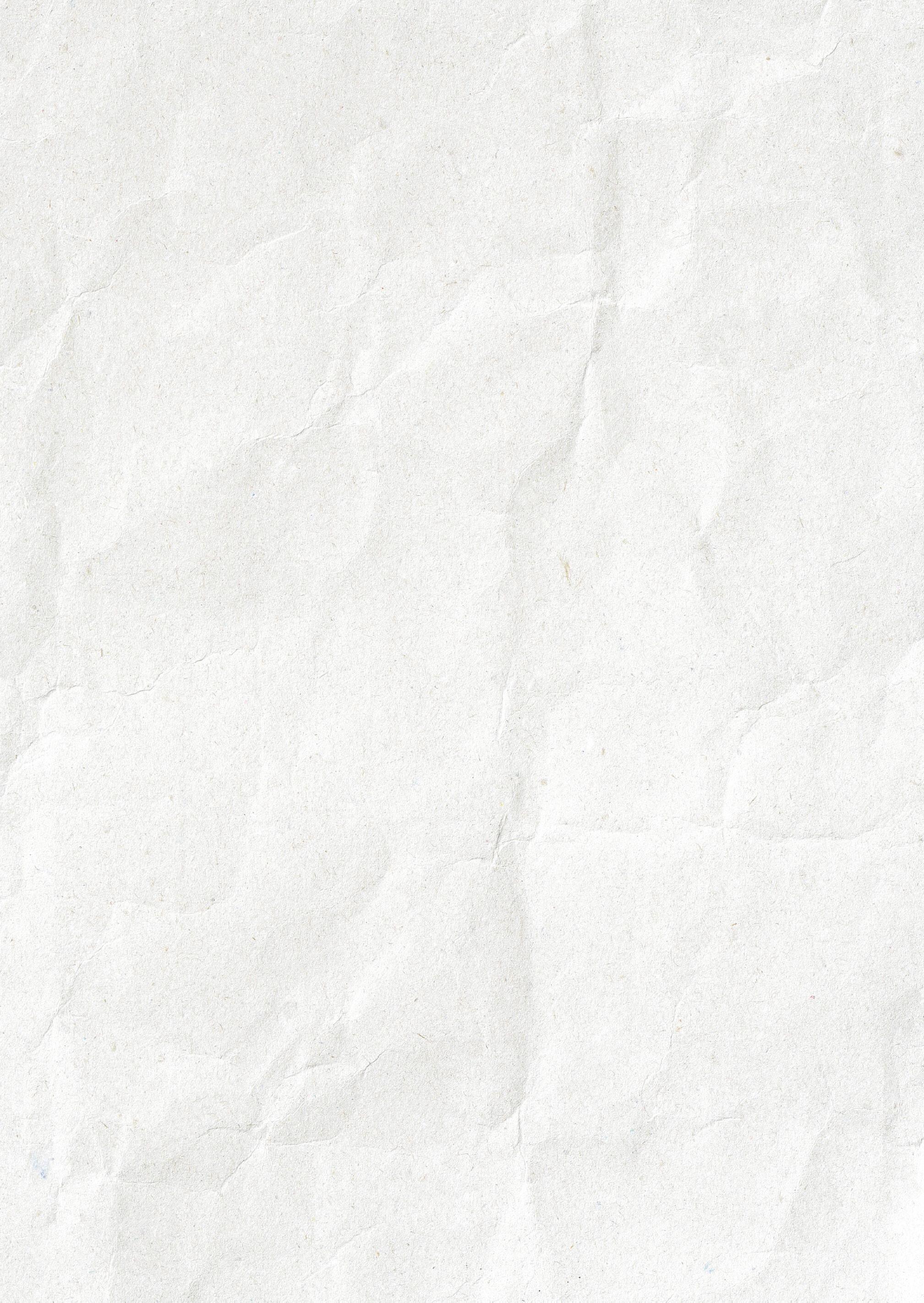

Long-time Kathers, first-time editorial. I read a lot of One Piece over the course of my travels last November, and Odacchi made me realise that editorials don’t have to be serious and insightful. They can be mundane and weird and completely off topic: like how I have a tendency to click my heels before crossing at pedestrian
I made a deal with my co-editor, Lou, to swap our designated editorial releases, thinking I had this all written out awesomely already. Turns out I only had this beginning paragraph and a few
Talking about Oopsies, my life is a mess. They say a room speaks volumes to a person’s mental wellbeing.

There’s a page I follow on facebook, amongst all the shitposts and uncensored classical memes, which is a collection of crap pictures of birds, or of birds excreting giant craps. This quite often makes my day. After all, who doesn’t want to see pictures of birds with long white gloops gushing from their cloaca?
While my friends have mentioned the proper word, I didn’t know the spelling of cloaca and just googled ‘birds bumhole’. I also learnt that a bird’s bumhole, AKA a cloaca, is also referred to as a vent. This makes me happy.

I enjoy a room with good ventilation - I guess birds enjoy some good ventilation as well ;)
Just, for your own sake, please don’t google ‘fish bumhole’.
I have a feeling that Lou may be shaking her head as she edits this for me (LJ: neverrrr). I’m super-significantly-sexily-seriously-sorry.

Thanks guys, I hope this wasn’t as tedious as the frequent security checks in a Malaysian airport. I actually wrote this in the KL airport: can you tell? I’m sure y’all will enjoy Issue 2 - I definitely had a great time in the creation of it!
To all my adoring fans, family, friends, and fellow drones of On Dit, all I can shout - in a whisper behind my mask - is ‘normalise the weird and gross!’
Life’s more fulfilling that way, y’know?

With mixed emotions, we see the wrapping up of an other successful O-Week. The vibrant and enjoyable scenes of O-week remind us of the reality that a new academic semester looms upon us.
Despite the sombre reality, there is still much to look forward to in the new academic year and ‘more importantly’, the YouX calendar. With many students having acquired their YouX memberships, I would like to advise everyone to keep a sharp eye on their inbox so as not to miss the YouX update and all the upcoming events such as the Members lunches and much more.

On a more logistical note, I am currently engaging with University representatives and interested parties, to see what can be done about the current billing system that has been implemented at the University Health Practice. I have been made aware that the current system involves patients being billed the full consultation fee, after which they are refunded by Medicare, minus the ten-dollar gap fee. This results in students having to carry the cost of the consultation for a short time. This can often be difficult due to the typical financial strains experienced by students. As such, I will be engaging with Unicare and Better Medical to hopefully reach a solution that ensures students are still supplied with uncompromised health care on campus.

Moving on to brighter topics, as I am sure some of you will be aware, the Clubs budget has been increased by 25% this year. This is following the amazing efforts from our Clubs last year, which resulted in the complete use of the budgeted funds available. Not only has the budget been increased, but the Clubs Committee has made changes to the Minor Grants categories that will see clubs being able to apply for greater amounts in the merchandise, equipment, and events & activities categories. With this in mind, I encourage clubs to visit the Clubs Grant guide and see what you are eligible to apply for. I hope to be faced with the prospect of approving your Clubs Grant in the not-too-distant future.
The final item on my reporting list is to note that Student Care is now back to full capacity following the recent employment of Bethanie Coggins as an Education Welfare Officer. Bethanie brings with her a wealth of experience, having worked as a Senior Student Advisor in the SET faculty. This development will increase the capacity of YouX Student Care in assisting students who are in need of educational support and welfare.
In conclusion, I wish all students a fantastic start to the new semester. If you have any issues or concerns, as always, please do not hesitate to reach out to me.

Yours Sincerely,


 Luke Allen YouX President
Luke Allen YouX President
















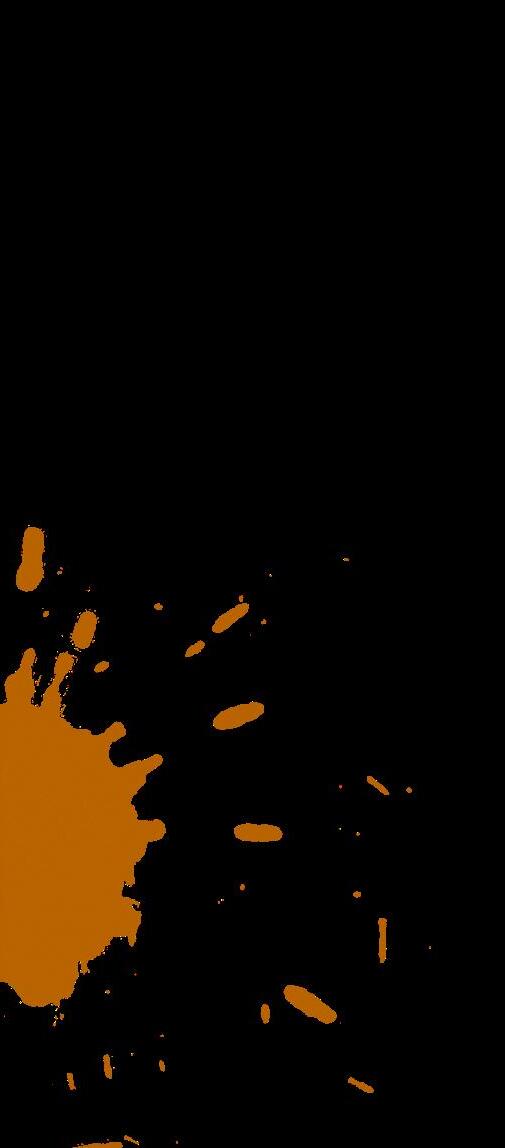

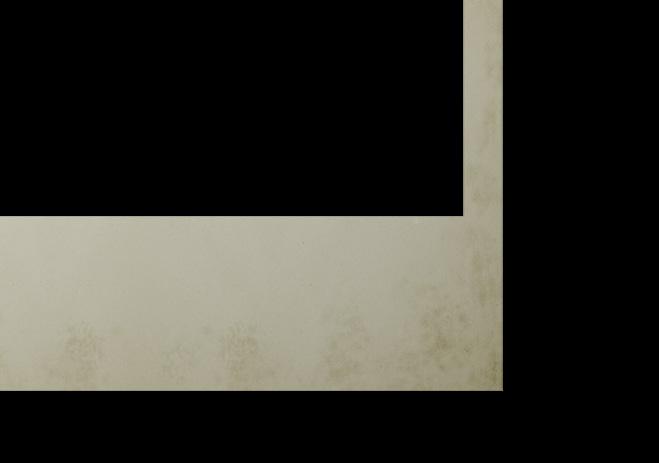


There’s no shame in a ‘traditional’ university experience not working out for you. A 97.5 ATAR doesn’t always translate to perfect HD’s across your classes in uni. Working to make ends meet can sometimes become the priority. Maybe you need time to take care of your health. That’s okay.
University can be an incredibly challenging experience and I don’t think that is spoken about enough.
It can be a difficult transition to start uni for the first time or change institutions, but life also has a habit of throwing curveballs your way that can sometimes impact upon your studies.
There was a period of time where the thought of attending a tutorial in person caused me to feel ill with anxiety. I felt out of place on campus and struggled to complete assessments. I stopped attending my tutorials because my anxiety was so debilitating. This change came very out-of-the-blue. I had always excelled at high school and I felt so disappointed in myself for not even being able to step into the Hub. Dropping down from a full-time study load and accessing support services was my saving grace. It meant I could focus on tackling my anxiety and do better with a lighter study load. For a while, I felt scared about being left behind in my degree, but taking care of myself became a bigger priority.
Grappling with shame, disappointment and the idea that my university experience was not at all what I had envisioned was incredibly tough and it’s taken me a long time to realise that I am just one of many people who has experienced turbulence in their uni life.

There are support services available through the University that can help. You can register for an on-campus counselling appointment online, or call counselling on 08 8313 5663 to chat about the counselling process. The Uni also has Student Experience Coaches, where you can meet with a coach from your specific faculty to discuss how uni can work around your personal circumstances - get in touch online or email coach@adelaide.edu.au.
The above may help, but in my case I also found great value in accessing off-campus mental health support and reaching out to the friends and family around me.
Taking on less classes, utilising support services, and reaching out to your lecturers and tutors to chat about what you’re going through are all normal and all acceptable (they’re human too, they should understand).
Realise that there is no ‘normal’ university experience. There is only what works best for you.
If you want any guidance with adjusting to uni, myself or the SRC Welfare Officer may be able to help point you in the right direction. If you would like to get in touch for a chat please contact me at srcpresident@adelaide.edu.au or message me via Facebook.
Georgia Thomas SRC President




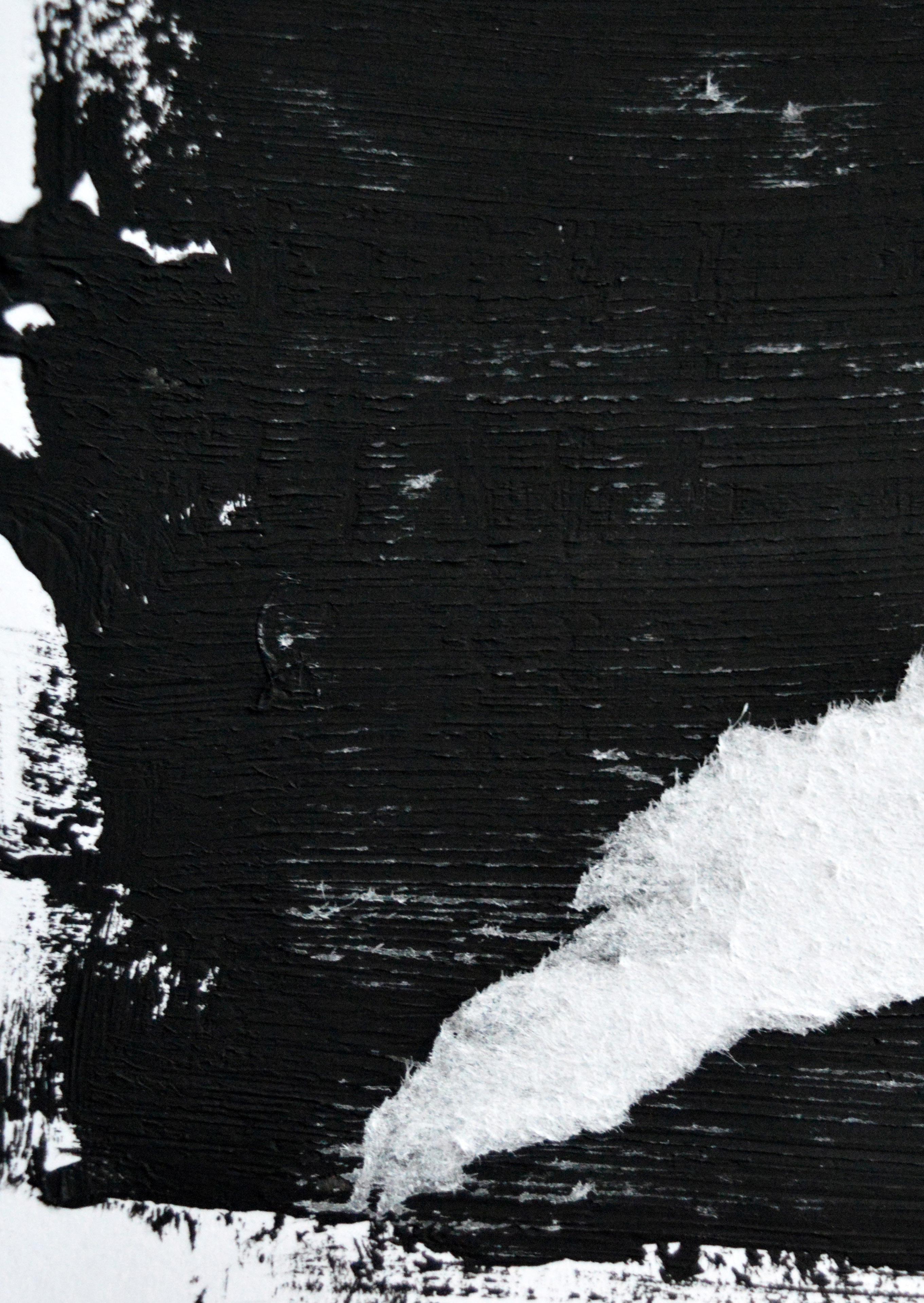
I am a gamer, and by a gamer I mean that I have a strange affinity for tabletop card games. Give me a deck of cards and I will be entertained for hours (this is probably the most low-maintenance you will ever hear me being). My favourite game at the moment is Five Crowns, a card game that loosely resembles Rummikub. It’s quite simple, but requires a bit more thought than traditional card games. If you’re looking for something more challenging and competitive, May I will tickle your bits. May I is like Five Crowns’, Rummikub’s, and Phase 10’s strict mother. All you need for May I is three packs of cards, at least four players and about four hours of brain power. This game is my family’s equivalent of Monopoly, in terms of its competitiveness, and its emancipation encouraging potential. - Sienna
My go-to tabletop game would have to be an oldie but a goodie - Connect 4. For those of you who aren’t familiar with Connect 4, it’s pretty self explanatory - two players take turns dropping their chips into a grid, the aim of the game being to get four pieces of the same colour in a row to win. There’s lots of ways to play, but personally, my favourite way is to focus on disruption. Blocking lines and causing as much annoyance as possible for the player opposite me (in this case my Nana, bless her), until an opportunity presents itself. What also brings me joy are the games that come down to the wire, and simple math. You have a line of three ready to become a winning four. All you need is for your opponent to place a chip, so that you can place your chip on top of it. Knowing this, they make every other move, desperately delaying your win. But they can’t forever. Depending on how many spaces are left, you or your opponent will be forced to place the fatal chip. The climax of the game is defined simply and discretely by who placed the first chip. If you ever have a bit of time to kill, give it a try - I promise it’s more exciting than I’m making it sound. - Seb
What’s this? Tabletop games? I’M IN MY ELEMENT! Too much so: it’s hard to choose! But if I have to (and I do), I’d have to say it’s a tie between two games; Dixit and Unstable Unicorns. Dixit is a game for the creative minded - everyone is dealt a hand of cards with some of the most stunning artwork I’ve ever seen in a game. Starting with the first player, they choose a quote, song, word, - whatever they want, really, to represent their card, which they place face down. The remaining players will choose a card in their hand that they think also fits the representation. The goal is to have at least one person guess correctly, and one person guess incorrectly, otherwise the other players steal all the points. Unstable Unicorns is a game I use to quell any vindictiveness dwelling under the surface of my personality. It’s cute, fun, and you can really fuck people over. I love it! The fact that you’re collecting adorably drawn unicorns, most with their own unique personality, really appeals to my love of cartoons and things-that-are-cute-but-ready-to-fuck-shit-up. You can even get a travellers pack, which is the size of a normal deck of cards, to play and destroy any strangers you meet.
- Kathers

I have been liberally bullied by my friends for my absolute inability to take on the rules of card games… It all goes in one ear and out the other! Nothing humbles me more. This has made me far more of a fill-in-the-blanks gamer, though I don’t mind a humbling. Very appropriately, I played my first game of Cards Against Humanity at age 12. And it has been a concerning pillar of my social life ever since. It’s a simple game where a rotating card Czar reads out a black card with an amusing fill-inthe-blanks and everyone submits a white card answer. The game is inappropriate, shit-stirring and hilarious. The more drunk/drunk on vibes you are the better. There was a good term in Year 10 where my friends played CAH every lunchtime. At Catholic school. In the very exposed courtyard. I have no excuse for this. I’ve played CAH with friends, acquaintances, enemies and even my family (not my Grandad though… bit much even for me). In all that time, it’s never gotten old. ’Bees?’, while not the most inappropriate (by a looooong shot), is the best card and I will not be accepting feedback.
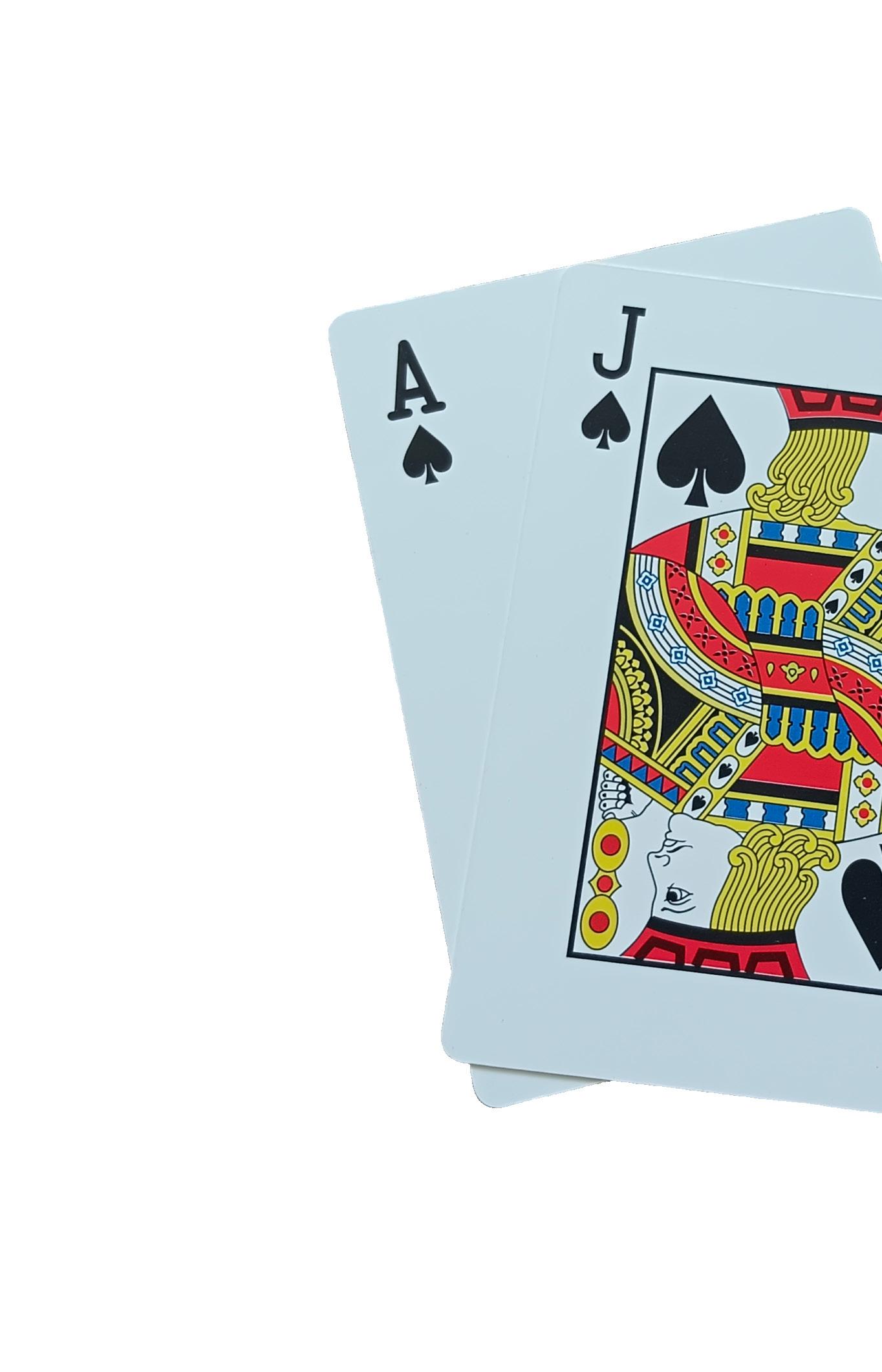

 - Louise
- Louise
We ask four UofA students the most pressing questions. If you want to be featured in another issue, email us!
1. Mostly ambivalent. I feel like no one has clearly articulated exactly what it means for the average student and so it could go either way. I hope that they keep the name “the University of Adelaide” though, it feels more prestigious than Adelaide University even if everyone shortens it to that anyway.
2. Marceline from Adventure Time & Kevin from Ben 10 Ultimate Alien
3. I’m a cracked black pepper FIEND but I feel like that doesn’t count as a real spice, so paprika. Tiahna_Ludborzs.she/her B.Psychology_Adv_3


1. The proposed merger sounds interesting, definitely will usher in a new era for education in South Australia itself.
2. Danny Phantom!!!!!! The ghost transformation? Hook, line and sinker!
3. I come from a culture that uses a lot of spices so choosing one is quite difficult! :( but if I really have to then, chilli powder?
1. How do you feel about the proposed merger between the University of Adelaide e and UniSA?
2. Who was your cartoon crush growing up?
3. Favourite kitchen spice.
1. The merger is bullshit. I’m just hoping it doesn’t happen before I graduate. More people will lose their jobs, less students will be getting the support they need, and we will probably be less employable tbh.

2. Gwen from Total Drama Island and/or Action
3. I put MSG in everything. Also chilli flakes. If you think MSG is unhealthy you’re racist and make bad food. Jenny_Jung.she/her

1. It’s hard to have just one feeling about the proposed merger. You can’t help but worry about the potential consequences to the quality of education and staff facing layoffs, as well as what the impact will be for our Waite and Roseworthy campuses. Whilst it’s in the business plan stage, there’s definitely been discussions between all parties before this point which raise questions about whether the deal has already been done.
2. Hiccup from How To Train Your Dragon. I stand by that.
3. Cumin, a vegetarian’s staple
The University Health Practice has introduced a $10 gap fee for consultations. Do you consider this to be a reasonable measure?
The university last year privatised the school GP, and immediately they tried to remove bulk billing for students. That was reversed, but it seems now they are trying again to make healthcare inaccessible for students. The greens club considers this unreasonable
No. All patients should be entitled to universal, free healthcare. The Practice’s privatisation and introduction of gap fees is symptomatic of a crisis in our health system. During a cost of living crisis, the rapidly declining availability of bulk-billing creates worse health standards for workers and students. We must remove the profit motive from primary healthcare. The university and private clinic’s well-paid corporate executives, and the federal government, should foot the bill.
Given the circumstances this is a reasonable change. Students will pay $10 for a 20 minute appointment, which is usually cheaper than other GP clinics. We have a shortage of GPs because after becoming a doctor most graduates specialise, and in order to provide the quality of care, a gap is required.
 Written by Steph Madigan
Written by Steph Madigan
Over 110,000 students are attempting to live on a mere $26 a day–for them $10 *can* break the bank. Universities supercharging essential services have no right to complain about students studying less and working more in order to stay alive. Under such conditions, how can we expect students to reach their full potential?
Do you support the legalisation of cannabis for recreational use as proposed by federal Greens senator David Shoebridge?
Absolutely, the enforcement of cannabis is often used as a racist tool of control and oppression. It is disgraceful that the use of a harmless plant can lead to a criminal conviction, that can negatively impact one’s life. If legalised the taxing of cannabis sales can increase government revenue that can contribute to making uni, public transport and dental healthcare free
Yes. The distinction between illegal and legal drugs is often arbitrary and informed by criminalisation and commercial interests, rather than public health concerns. Drug criminalisation has significantly harmed working-class communities and the poor, creating a black market and failing to address genuine health and welfare issues. Punitive measures towards cannabis users strengthen state repression while doing nothing to help those suffering from substance abuse.
No, Cannabis is a drug with psychedelic properties. If legalised it could easily get into the hands of children whose brains are not yet fully developed, causing lasting effects. Just look at California for an example. However, We do support medical usage for researched conditions
 Written by Steph Madigan
Written by Steph Madigan
What’s not to love? All revenue from legal cannabis sales would pass onto the state– estimated to be $28 billion. For that money, we could provide enough free housing in the country to eliminate homelessness, enough free food to eliminate child hunger, or add unlimited free psychology sessions to MediCare.
The Chinese Government recently announced all students must return to their face-to-face study immediately. What should the Australian Government and universities be doing to support returning Chinese students?
The Federal government plans to end unrestricted student visa working hours during a costof-living crisis. Students will be forced to work countless hours illegally for as little as $10 an hour to simply live in Adelaide. The government must rethink their policy if they have any compassion towards international students.
International students have long been exploited by profit-hungry universities through out rageously high fees and accommodation prices. The government and universities should be giving back to the students they have profited from for so long. Restrictive visa requirements should be dropped and full access to welfare and healthcare guaranteed. The private mar ket in student housing should be shut down and universities forced to provide affordable housing.

This is a great step in the right direction. The university will likely not have to change very much. There might be a change in the proportion of face to face versus online learning courses.
Prioritise visa processing for international students, but long-term address serious bottle necks in migration services that can be linked to pandemic layoffs.
-Ensure there’s enough secure accommodation by banning rental bidding, mandating quali ty standards, and ending “no-grounds” evictions.
-Orientate students from induction onwards–not abandon them halfway. Initiatives could include a “Jobs on Campus” program or a working group focused on adjusting to Australia.

.en peek ni enil ek e p ni .enil peek ni .enil peek ni enil . peek ni ilen . k e pe i n l i n e . k e e p in l ine. keep in line. keepinline. keep in line. keep in line. keep in line. n .enil peek ni enil ek e p ni .enil peek ni .enil peek ni enil . peek ni ilen . k e pe i n l i n e . k e e p in l ine. keep in line. keepinline. keep in line. keep in line. keep in line. pe ni .enil peek ni enil ek e p ni .enil peek ni .enil peek ni enil . peek ni ilen . k e

l ine. keep in line. keepinline. keep in line. keep in line. keep in line. n .enil peek ni .enil peek ni enil ek e p ni .enil peek ni .enil peek ni enil
. keepinline. keep in line. keep in line. keep in line.
Yeah, yeah, I’m that mate who’s still on their L’s. I’m 20 ½ years old and still being driven around by my mum (bless her!). I know, I know, I could’ve just about relived my high school years in that amount of time, so why don’t I just book some driving lessons and get it over with already? Well, asides from the fact that a 90-minute logbook lesson with RAA costs more than a 100 bucks (yikes), in addition to being on a 6-month waiting list for occupational therapy, I am perfectly content with remaining in the passenger seat… for now.
I recently came across a TikTok on Facebook about a girl who prefers (key word: not won’t) to not drive, instead opting to be driven around by her boyfriend, even in her own car, dubbing herself a passenger princess, which I thought was fucking hilarious (if you’re at all versed in LGBTQ+ slang). To my dismay, the people in the comments failed to pick up on the humour (whether because they were Boomers or because they weren’t fruity, I don’t know), interpreting her declaration as a sign of arrogance and entitlement.
While I wouldn’t call myself a passenger princess in the strictest sense (I don’t have a partner lol), this concept has made me think about my experiences as a neurodivergent learner driver. No one should feel ashamed about delaying their driver education or simply not giving a shit about it all (mad respect), regardless of whether you have a disability, medical condition or not.
So what if I don’t mind catching public transport? It gets me from Point A to Point B all the same and gives me time to dedicate my attention to important stuff like readings and lectures (in theory--- I could if I wanted to, alright?) So what if I don’t mind walking places and getting some good ole fresh air and Vitamin D (not bad for the glutes either)? Maybe I like being able to listen to my tunes without the fear of running a red light or being held responsible for killing or injuring other road users. Is it really so wrong for a gal to want someone else to take the wheel, literally?
The way I see it, there are two kinds of people in this world: those who prefer to drive (givers) and those who prefer to be a passenger (receivers) and at the end of the day, we balance each other out.

When we think of farms, we often think of wide fields, barns, and perhaps even a song about an old man whose family name rhymes with Ronald. But as the threat of climate change becomes increasingly concerning, another way to farm grows in popularity.

Vertical farming flips the traditional concept of farming on its head. Instead of needing large, horizontal areas of land, it uses vertically stacked layers of plants in an indoor, controlled environment. The value of this approach to farming should be obvious in an increasingly urban world. More food can be produced on the same size of land, and instead of relying on weather cycles, for instance, technology such as LED lighting means crops can be produced all-year-round. While the phrase vertical farming might sound very modern and hightech, it arguably has a long history.
Ancient scholars claimed that Nebu chadnezzar II of the Neo-Babylonian Empire had the Hanging Gardens of Babylon built as a gift for Queen Amytis. While we have yet to deter mine its location today, this is widely viewed as the first proto-example we have of vertical farming in history. Around twenty metres high, it made use of a chain pump to transport water from the bottom of the garden to a pool on the highest layer. This purportedly was done in the context of a dry landscape and a reliance upon the water from the Euphrates River.


Another example we have of vertical farming are the Chinampas. Around a millennium ago, the Aztecs also overcame an unfriendly environ ment with a process akin to vertical farming. Essentially, the Chinampas were floating gardens composed of rafts and powered by hydroponics. The rafts had bases made of dried twigs and reeds, which also helped to provide support to the rafts and prevent disintegration. The Aztecs would remove mud from the base of the canal, while also practis ing dredging to enhance both the flow and quality of the water. This proto-vertical-farm was able to feed not only the 200,000 inhabitants of Xochimilco, but even those in other parts of Mexico City.

In 1915, American geologist Gilbert Ellis Bailey conceived the term “vertical farming”. However, his view of vertical farming will surprise modern readers: he wanted to use explosives to farm deeper and deeper underground.
It was in 1951 that the modern idea of above-ground vertical ground was conceptualised, in the form of tower hydroponic units located in Armenia. However, its purpose was to aid the exploration of space, And the required technological sophistication for vertical farming to really take off was not yet present.
And then came a thought experiment.

How to close the distance between places of food production and people, in order to decrease carbon footprints.
This was what Professor Dickson Despommier was contemplating in 1991. After nine years of thinking, the conclusion was reached that a thirty-storey building which functioned as a farm could feed 50,000 people. Hydroponics and artificial lightening were noted as necessary conditions. With his detailed proposal of how his thought experiment might work, he developed the model for modern vertical farms, which soon gained awareness globally.
In 2011, Cornell University Professor Ed Harwood, along with David Rosenberg and Marc Oshima, founded one of the most successful modern vertical farms. AeroFarms is a 6,500 square metre indoor farm in the United States which grows plants including bok choi and watercress in layers which reach the ceiling. It is computer-controlled: the temperature, humidity, intensity of the LED lights, concentration of carbon dioxide, and the water’s overall optimum condition are all automated. With utilisation of aeroponics and round-the-clock biologists and botanists, AeroFarms is reportedly four hundred times more productive than a traditional farm. Likewise, Europe’s largest vertical farm, Nordic Harvest, produces one thousand tonnes of food per year, while using two-hundred and fifty percent less water than traditional farms use, and the global vertical farming industry is projected to increase from a worth of $5.5 billion in 2020, to around $20 billion by 2025.
The advantages of vertical farming are many. For example, because they are controlled spaces with artificial lighting and closed-loop water recycling, the use of pesticides is not required, and the conditions are supposedly so clean that produce does not need to be cleaned before consumption. Vertical farms reduce food miles (the distance between where a food is produced and the consumer), which is good for the plant and could potentially be powered by rural solar farms. It is also anticipated that vertical farms might be the future if humans decide to colonise the Moon, or Mars. To summarise, vertical farms are simply more efficient than traditional farms.



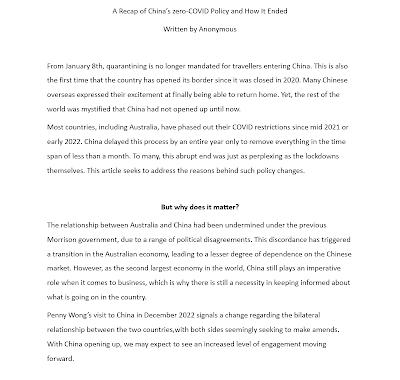




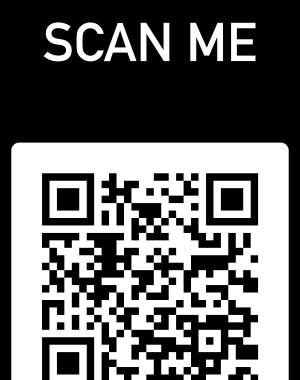

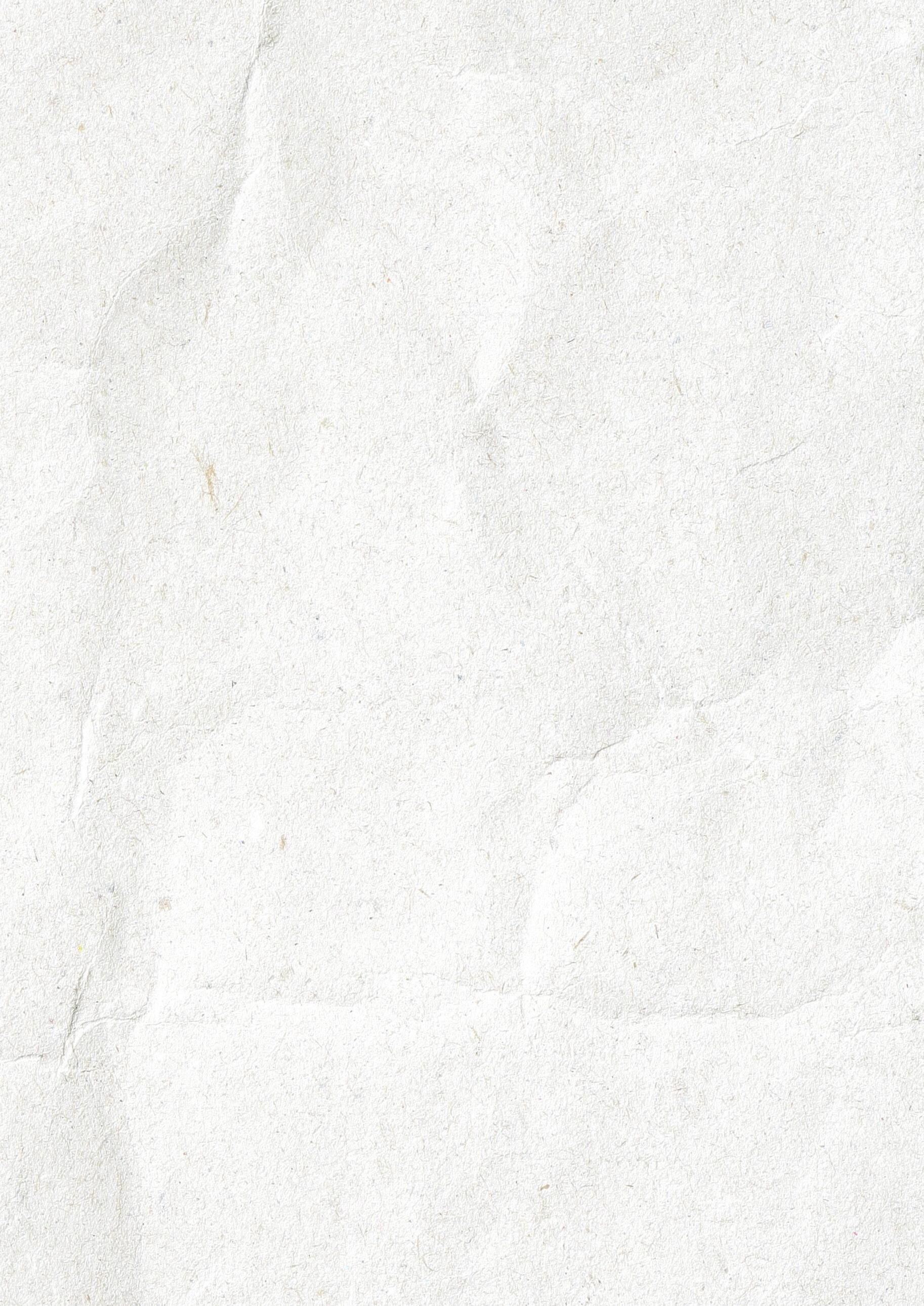
However, perfect solutions rarely exist, and there are several downsides to vertical farming. One is that vertical farms can be quite costly, naturally producing high energy bills. Despite advances in LED manufacturing decreasing costs and increasing efficiency, aspiring farmers may still view higher costs as a deterrent to engaging in vertical farming. While the practice can be profit able with crops such as strawberries, it is not with crops such as wheat, which cannot be easily stacked. Therefore, products such as bread produced from wheat grown in a vertical farm would incur a cost of around $32, just for the LED lighting alone.
Another potential downside of vertical farming is that its long-term impacts on human health is unknown. As wonderful as it has the potential to be, critics justified in raising concerns about food grown in entirely artificial conditions. Additionally, the potential for job losses, and impacts on culture are fears held by farmers. However, a vertical farming company has posited the idea that this might be a positive consequence in light of the low wages in the farming industry, as well as the exploitation of migrant workers.

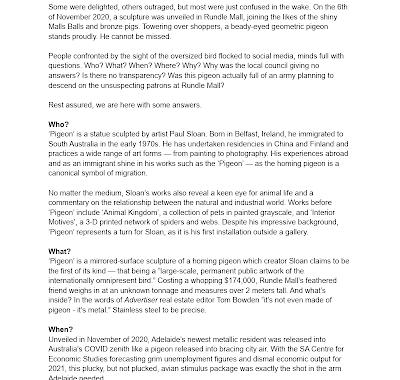
You may be wondering whether you can start your own vertical farm? Yes, you can grow your own vertical farm using hydroponics. If you know how to set up tanks and configure lighting, you can purchase a DIY hydroponics kit as long as you are willing to spend a decent amount of money. You would have to have an indoor space with vertical layered structures and think of plants that can grow well in vertical layers such as herbs, greens and even fruit and rice.
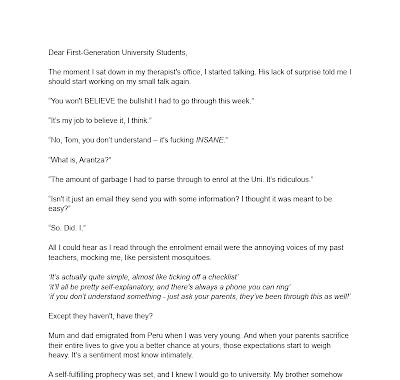
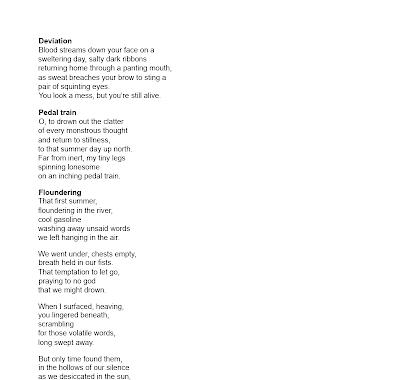
Is vertical farming the future of our world? Only time will tell.


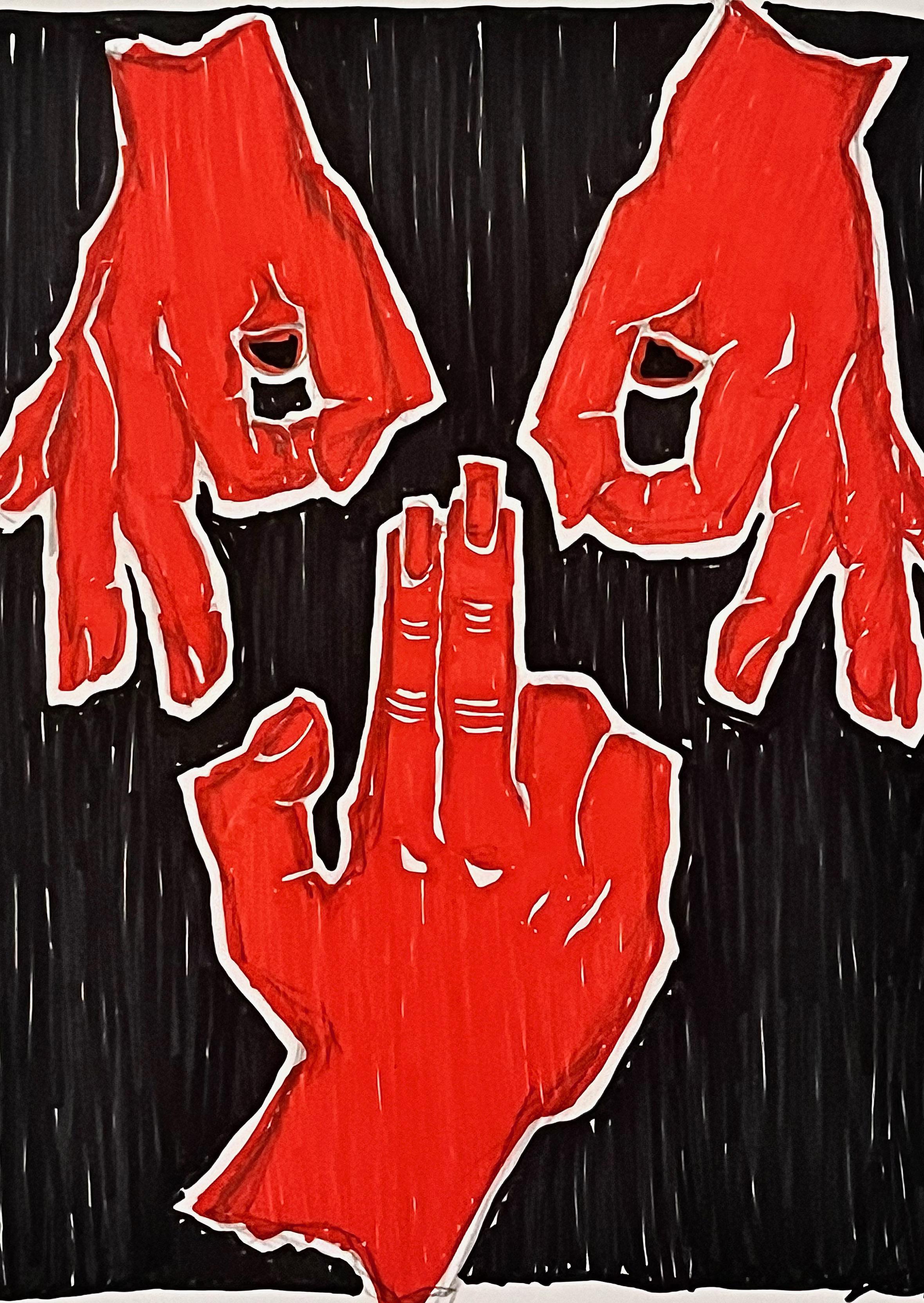
Johann Sebastian Bach. A household name of the classical music genre.
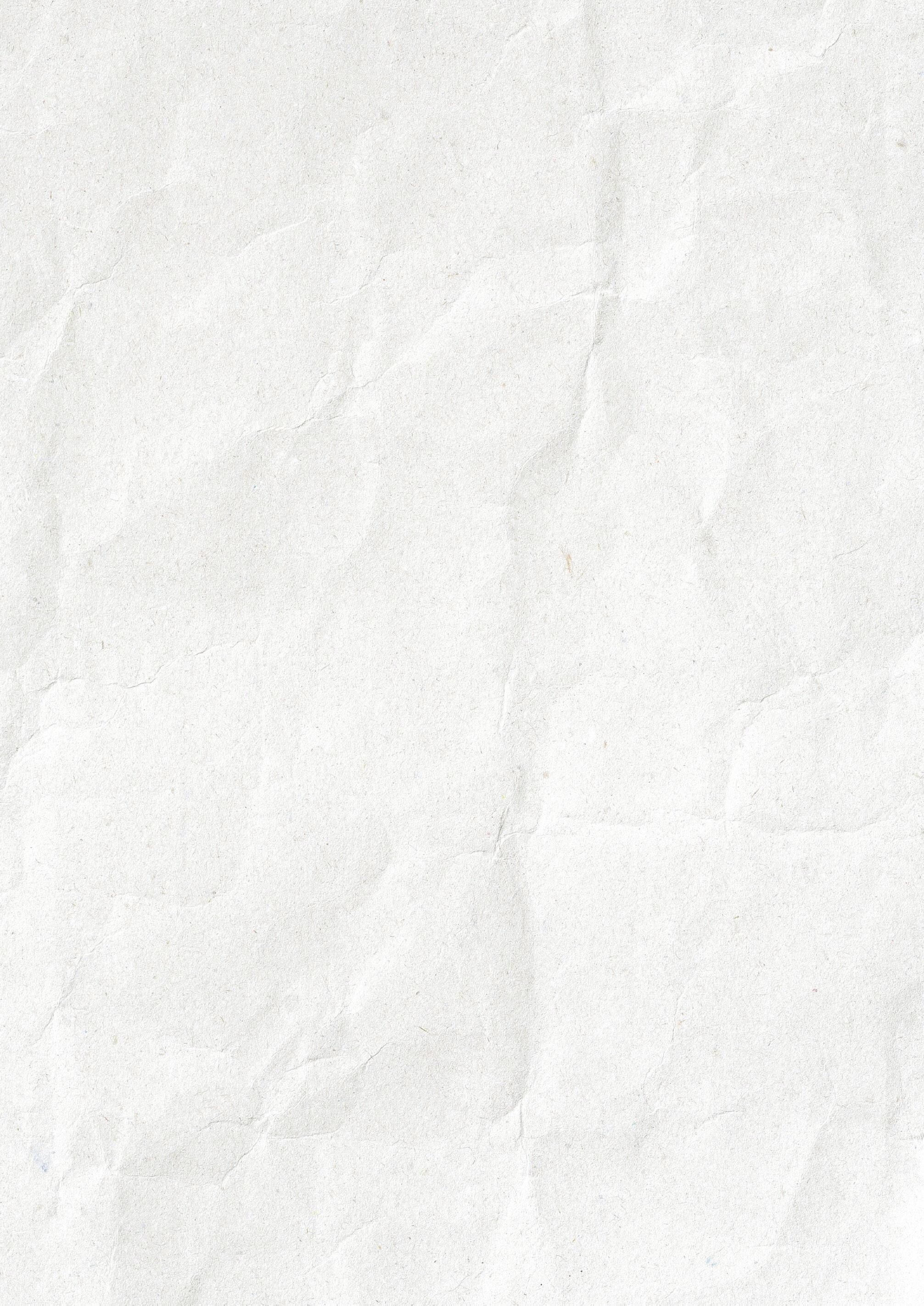
For a dead guy, his remains have been on quite the journey through Leipzig. Bach began his death era in an unmarked grave, became a pawn for the East German Communist Party and now lies in St Thomas Church (Thomaskirche) in Leipzig, Germany. Or does he?
Bach was not the most popular choice for Leipzig officials to hire as Choirmaster of Thomaskirche in 1723 (which basically put him in charge of all religious music in the city). Leipzig citizens were accustomed to a mellow, relaxed form of worship music. For them, Bach was far too modern, far too operatic and all together not the vibe for the worshippers of Leipzig.
Nevertheless, he spent the rest of his life in the position and composed a majority of his catalogue of music in that time. After an eye operation gone wrong, he passed away in 1750.
He was buried in the cemetery at Johanniskirche, without a marker or any real record, and was lost to time.
Until of course, his music was rediscovered a century later, and the classical world got Very Excited. Took a bit, but Bach was ‘too modern’ no longer!
With this renewed excitement, people began asking where Bach was laid to rest. And of course the answer was a vague, verbal description from a couple generations ago – “six paces away from the south portal”. Luckily, Bach was reportedly buried in an oaken coffin, which was rare for the time.

In 1894, a search in the area found a man of about 65 years in an oaken coffin and it was concluded that it must be Bach! Bach was laid to rest again in a fancy grand tomb, inside Johanniskirche.
Until, of course, Leipzig was bombed liberally by the Allies in 1942.
Johanniskirche was reduced to a crisp, but the crypt survived. Bach’s remains were hidden away until after the war.
Now in power, the East German Communist Party wished to rebury Bach in an imposing mausoleum with Communist symbolism rather than Christian. The International Bach Society kicked up a bit of a stink at that, and the decision was made to instead bury him in Thomaskirche, returning him to his place of work.
In July 1948, two bricklayers had the exciting job of loading a covered box containing Bach’s remains onto a wooden cart. They pushed it through the town, knocked on the door and stated simply:
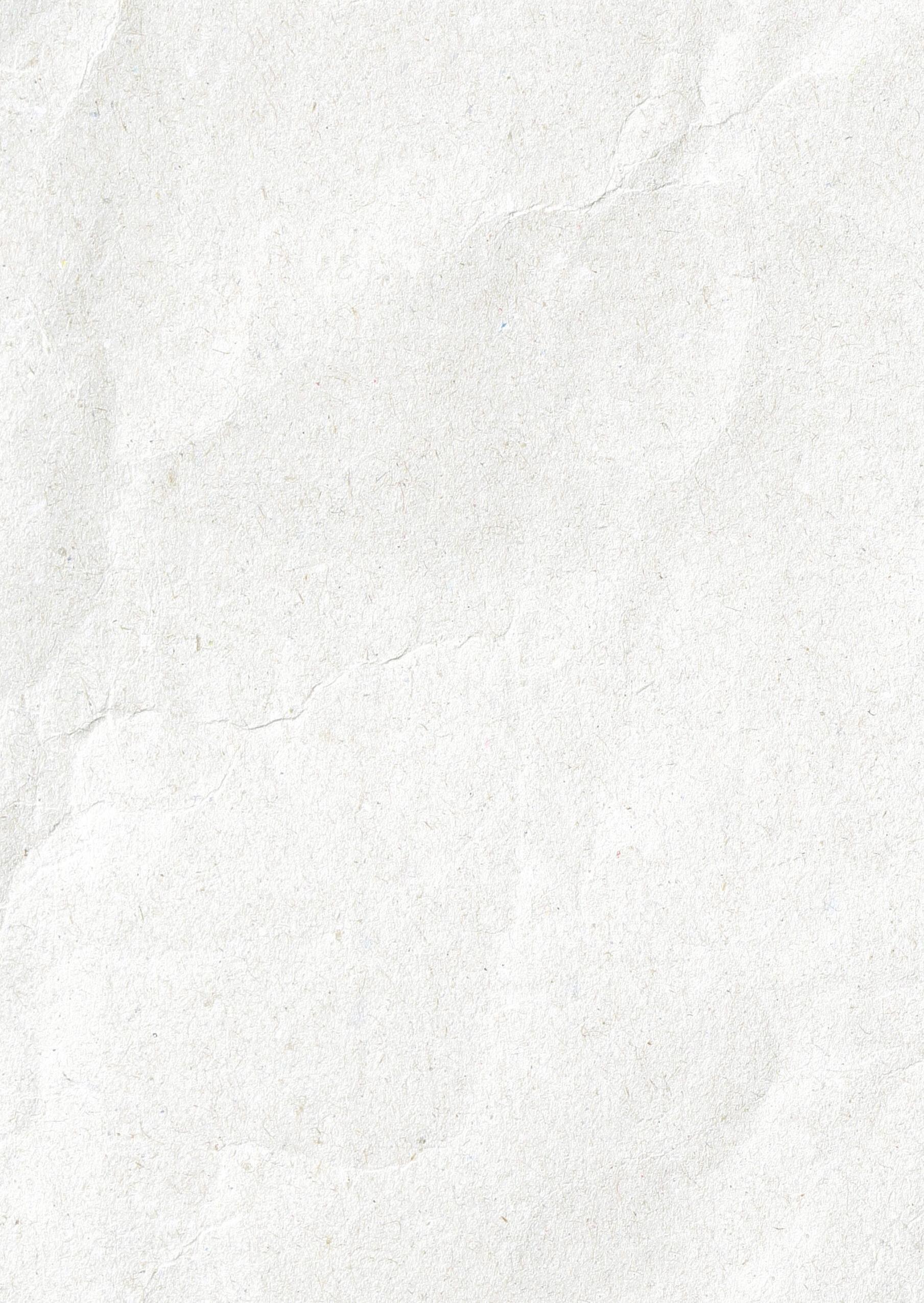
They were also responsible for the creation of the Bach Museum across the street, pouring more money into their Communist Bach rebrand. Leipzig itself was crumbling to pieces under the East German government. But Bach was forever.
After the reunification of Germany, Bach’s 250th death anniversary was celebrated in 2000 in a completely refurbished Thomaskirche. In contrast to the falling roof tiles of the last Communist celebration in 1985, Leipzig was eager to embrace a post-Communist Bach.
You see, Bach’s remains were very important to the Communist Party. When his ‘final resting place’ in Thomaskirche was revealed on the 300th anniversary of his death, Leipzig put on a grand anniversary celebration. It drew in visitors from around the world, though particularly from the Soviet Union. Bach and his grave were the talk of the Eastern Bloc.
The East German government attempted to rebrand Bach as a Communist freedom-fighter of his time, though the Western world watched on with laughter.
But Bach also became a pawn in the East German culture war. The Communist Party were big fans of destroying cultural sites, in order to replace them with ‘more appropriate’ options. Religious sites fell particular victim to this. As a church on the other side of the city was blown up, the Communist Party could simply turn around and say ‘but look how we protect Bach’ to any dissenter.
The Communist Party put all the cultural importance and symbolism of Bach-related sites onto Thomaskirche, giving themselves free reign to destroy everything else.
However, this information is not easy to find. The Communist legacy of Bach’s grave has been wiped from most of the tourist-facing record.
And all this before we can even talk about whether this is actually Bach! The validity of the remains has been called into question over the last two decades, with some research showing it’s highly unlikely that the guy at Thomaskirche is really the maestro. There’s a fair chance all these Bach diehards are going on pilgrimages to see a random dude.
Is it even important that this might not be Bach?
No. The grave, no matter who lies in it, is a solid tribute to the legacy of Johann Sebastian Bach as a composer, musician, and musical inspiration. And most of all, it is a pillar of both the postWWII, and post-Communist, rebuilding of East German cultural legacy.

“Tach, ich bring’ den Bach” - “Hello, I bring Bach”.
Demshuk, A 2021, ‘Bach’s grave as Communist legacy’, Canadian Slavonic Papers, vol. 63, no. 1-2, pp. 119–147.

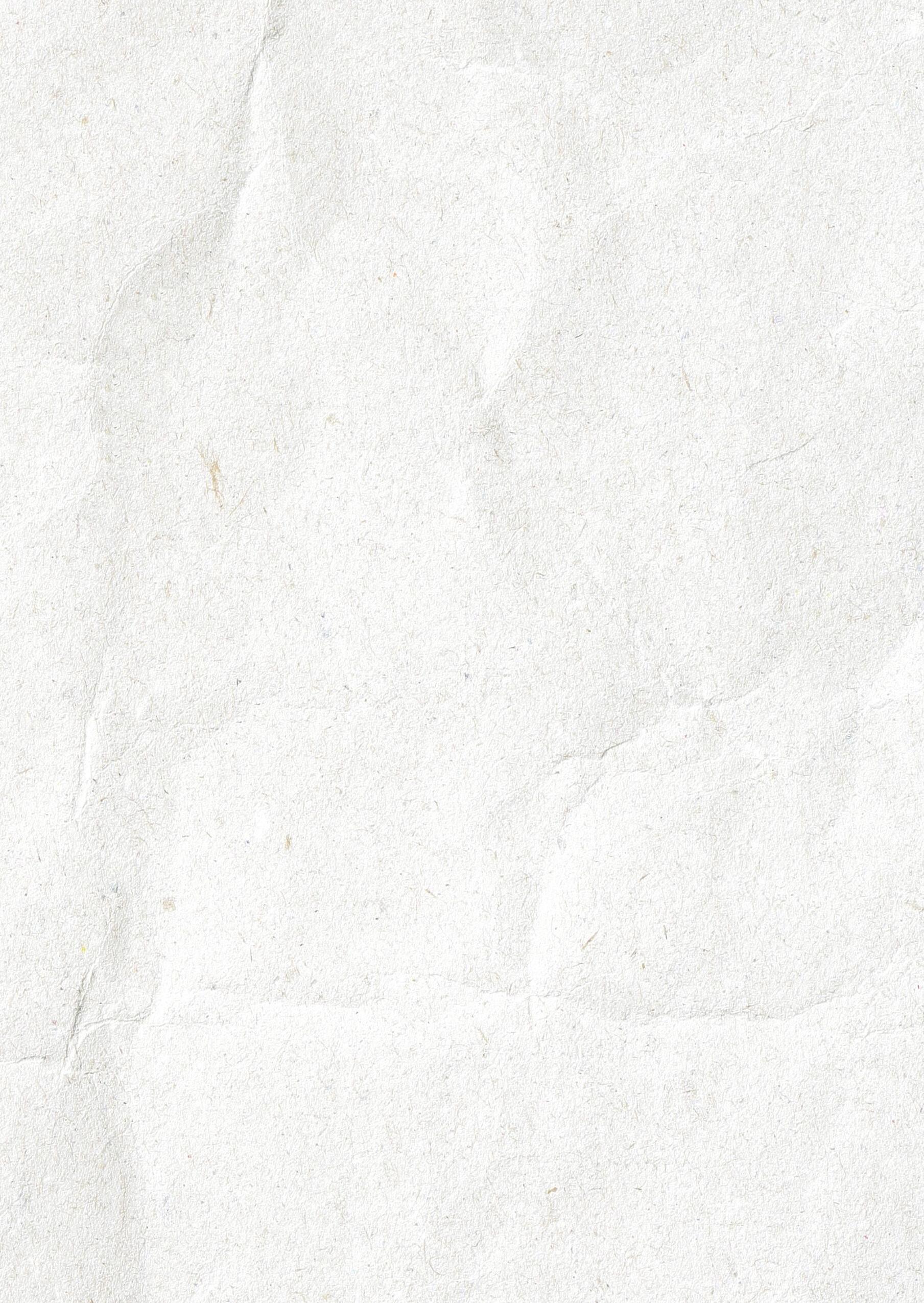
Gretzschel, M 2000, ‘“Tach, ich bring’ den Bach”’, Hamburger Abendblatt, 15 July, <https://www.abendblatt.de/archiv/2000/article204352455/Tach-ichbring-den-Bach.html>.
Thomasson, E 2000, ‘German Town Celebrates Bach's Legacy’, abcNews, n.d., <https://abcnews.go.com/Travel/ story?id=118882&page=1>.

Hey club, tell us about yourself!
Our club features weekly classes for dancers to build on their foundations and skills. We also have internal and external battles which are open to all, whether you’re a beginner or an expert!
3.
The Adelaide University Hip Hop club is open to everyone who is interested in Hip Hop Dance and freestyle. No experience is required!! The club caters to people of all skill levels and we are here to support you.
What kind of activities are popular in your club?
Why is this club important?
2.
Our club fosters an open environment for all people to explore hip hop dance and culture. It’s a friendly environment to meet new people and also get connected with the greater Adelaide Hip Hop community through our joint events with other dance groups outside of the club.
What’s a ‘secret’ no one knows about your club?
Come and find out ;)
5.
4.
Ed note: Darn it, my deliciously devious plan to learn your club’s secrets has been foiled!
How can students find you or contact you if they’re interested?

Students can check out our instagram: @auhiphop
Our facebook page is: www. facebook.com/AdelaideUniHipHop
Bach Triptych
Ben Dollman, Jane Downer, Andrew Georg
14/4/2023 @ 12.30pm

Elder Hall, Adelaide
$14 general admission, 25% savings with a Gold Pass subscription
Tickets available from Elder Conservatorium of Music Concert Series website, Lunchtime Concert Season One
Sacred Sky
Australian String Quartet
21/4/2023 @ 12.30pm
Elder Hall, Adelaide
$14 general admission, 25% savings with a Gold Pass subscription
Tickets available from Elder Conservatorium of Music Concert Series website, Lunchtime Concert Season One
Sunsick Daisy
feat. Sunsick Daisy, Coldwave, Stripes, Urban Youth
25/3/2023 @ 7:30pm
Unibar Adelaide
$16.92 from Moshtix
feat. Guitar Wolf, Lola, Perdition
8/4/2023 @ 7pm
Unibar Adelaide
$38.33-$43.43 from Moshtix
Piano Duo
Lucinda Collins, Konstantin Shamray
28/4/2023 @ 12.30pm
Elder Hall, Adelaide
$14 general admission, 25% savings with a Gold Pass subscription
Tickets available from Elder Conservatorium of Music Concert Series website, Lunchtime Concert Season One
On the Town
Elder Conservatorium Music Theatre with the Elder Conservatorium Symphony Orchestra
26-27/4/2023, time not yet disclosed
Elder Hall, Adelaide
$14 general admission, 25% savings with a Gold Pass subscription
Tickets available from Elder Conservatorium of Music Concert Series website, Evening Concert Series
Uni Days
feat. King Stingray, Adam Liaw
29/4/2023 @ 7pm
Unibar Adelaide
$60 from Moshtix
If you’re a student of UofA and have an upcoming gig in May, please email us at onditmag@gmail. com and we’ll include it in our gig guide!
It’s 2007: the year of low-rise jeans, Britney’s infamous shaved head, and the launch of Steve Job’s latest device: the iPhone. With its touch technology and “app economy” the iPhone was promised as a revolution for the mobile phone industry. Sure enough, within the first 3 months of release, Apple had sold 1 million. Concurrent with smartphone progression was social media. In 2008, Facebook had overtaken Myspace; Its new ‘like’, ‘share’ and ‘comment’ buttons, along with its accessibility as an iPhone app, allowed it to reign supreme over the social media landscape.
Fast forward to today and 86% of people own a smartphone, 82% use social media, and the average person spends 4 hours on their phone a day. That amounts to 10 years of smartphone usage during an average lifespan!
Researchers say we are currently in a mental health crisis, with depression and anxiety at unprecedented rates in young people. Although there are other factors at play, many attribute this largely to social media, and the frequency of its use.
Smartphones and social media are currently front and centre in our lives. During covid isolation, many desperately clung to social media for a sense of connection. Don’t get me wrong, it was a helpful resource during a global pandemic. However, many people have now grown fatigued with their smartphone usage and compulsion to interact with social media during every uncomfortable, boring moment. And I was no different. So, in 2021 I deleted social media. I had long been in denial about my social media and smartphone dependency (addiction), and after a sudden bereavement, I started to contemplate the possibility of my own sudden death. If I were to die tomorrow, I would’ve spent over a whole year just on my phone.

Before social media, the value of an experience was measured internally. Now it is often determined by how it can be shared and engaged with online. Personal moments have been transformed into photo-ops and pseudo-events: another image or video to extend one’s curated online self. I didn’t truly know how to validate an experience without online approval, and I grew deeply self-conscious as I viewed others’ curated profiles, ones that seemed so much more interesting, beautiful, and exciting.
This choice to share and consume isn’t autonomous. Social media is designed to engage the dopamine pathways in our brains. With each scroll and each interaction, we experience another hit of dopamine, which keeps us glued to the screen. And for me it didn’t just stop at social media.
This image is adapted from,“Everyone is staring at their phone, on the Seoul Metro”, https://www.flickr.com/photos/marc_smith/5166351572, by Marc Smith 2010, licensed under CC BY 2.0By then I had cut down my screen time from 4 hours a day to 1.5 hours a day. I finally learnt how to enjoy events for their own sake, and to validate my own appearance and talents. However, my phone was still the first thing I looked at in the morning, and the last thing I looked at before bed. I knew I needed to make another change...

I will now introduce the “dumbphone”, a tongue-in-cheek name for a phone that lacks the advanced functionality of a smartphone. A month ago, I decided to ‘upgrade’ to my now beloved Nokia 8210. Functionally speaking, it’s unbelievably frustrating. Texting is a nightmare, I can’t do group chats, I can only upload 20 songs, and the list goes on… But here are some of my insights of living with a dumbphone for a month (if you’re still interested):
My smartphone was stifling my creativity and imagination. With my dumbphone, I had to spend every dull moment searching for an activity. I wrote more, made wmore art, watched more movies, and read more books. It felt like I finally had space to foster my hobbies and conjure up ideas, instead of consuming other people’s.
everyone is always checking their phone!
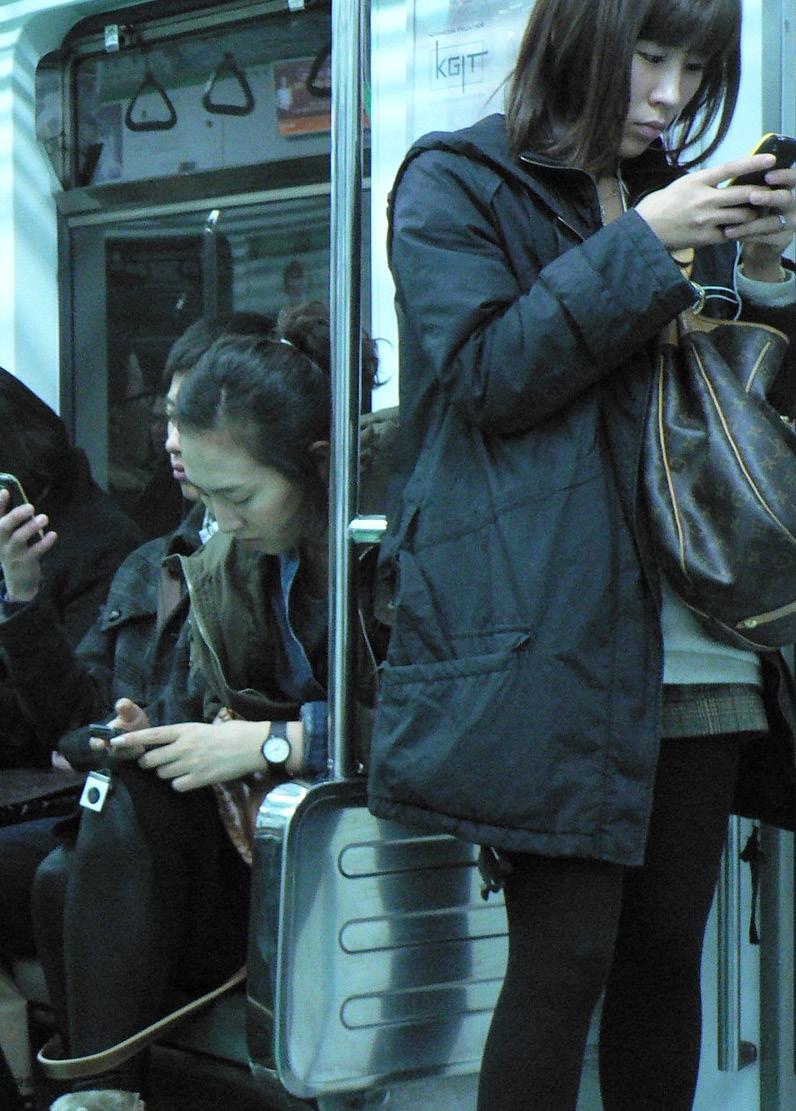
Often at social gatherings, people will stop mid-sentence to glance at their phone, which is awkward and stifles the conversation. By the same token, I am now more engaged with the people around me and feel more inclined to start conversations and listen deeply.
The absence of Google Maps in your pocket is not as life threatening as I thought. It’s not difficult to find your destination by writing down directions and following street sign, especially in Adelaide. Now, I have a better sense of direction than ever before.
A lot of the online issues that held so much importance, are actually not that important at all. People I idolised online were forgotten, insignificant drama was off my radar, and the constant comparison to others online dissipated. I felt more present and confident within the real world than ever before.
I would be lying if I said I became this creative, productive, and insightful powerhouse because of my ‘dumbphone’. I still have many unproductive moments, my room is messy, and I will probably always be slightly disorganised. But I do feel happier and less anxious. My attention span has grown, and I have a growing spatial awareness of the city I live in. Ironically, I’m also more social and busier than ever. My quality of life has drastically improved.I’m not preaching that you beat yourself up about your smartphone and social media usage. In fact, upon reflection, I think it’s endearing that humans have an intrinsic compulsion to socialise. What I hope for us, is that we learn to become more intentional with our smartphone use and to problem solve when we encounter uncomfortable feelings like boredom. To learn to be present in real life, rather than constantly distracting ourselves with screens.



Lying upon his blanket, his snout a-twitching and his leg a-jumping, my pupper dreams of better times. Does he dream of his youth? His body moves with abandon, as if he is chasing other puppers at the park. Even now as I watch him, he rolls on his back and paddles his legs in the air. Faster and faster he runs, so fast his legs catch the air. This, on smooth floorboards, allow the blanket to move with the pupper on top. They begin to spin around and around at a dizzying rate. I’ve never seen such a thing in my life, as the pupper and blanket both rotate around the room, ever increasing in speed. I am now stranded upon the couch, unable to help either myself or my pup. All I can do is hope and wonder. Wonder about what he is dreaming of to create such a phenomenon. Let us peer into his dreams.
Imagine this, an empty dreamscape except for circular objects with holes in the middle. From a distance, they look like rings. But when one moves closer, they would realise what they are. Doughnuts. Large ones, small ones, stacked ones, iced ones.
Imagine within this dreamscape a floating pupper, legs moving furiously as he tries to run the first doughnut he sees, until he discovers the next, and frantically changes direction to reach it. Detect, disconnect, direct.
Imagine the pupper, so intense in his attempts to reach each doughnut that he’s stuck in the centre, orbiting around his own desires. The more he sees, the more the he



until, from within the centre of his being, a black spot emerges. At first this spot looks like a blackhead pimple, tiny and almost invisible. But it sprouts, expanding, spanning, growing, and soon one cannot miss it. It continues to increase until the dog is no more, and a blackhole of doughnut desire remains. As blackholes do, the surrounding doughnuts are sucked in. The pupper, in his demise, shall get what he wants. But, what’s this? The doughnuts slow down before they reach the centre. Oh, indeed, the pupper is now a blackhole. As objects, or doughnuts in this case, get closer to the centre, the slower time moves until halting before the rim of the blackhole. I guess the pupper will never get what he desires the most. …
I remain perched upon my couch as my pupper tornadoes around without pause. I can no longer define the lines of his body. He has become a blur on my living room floor. As he spins, his centre be gins to compress, spread, until it hollows out, his form now adopt ing the shape of an ‘O’ - a doughnut. But it doesn’t stop there. It doesn’t stop until my pupper, doughnut and all, thins, until all I can see is the line of his body. Even that line gradually disappears and my pupper is no more. In the end a victor emerges: I have lost my pupper to his desires.







He has been eaten by the doughnut.

Getting

As artificial intelligence sweeps in, it appears that current laws and regulations are lagging behind, leaving many grey areas up for debate. This is particularly noticeable in the field of copyright and intellectual property.


On January 13, a class action was filed in California Federal Court against Stability AI, Midjourney, and DeviantArt. The plaintiffs are artists who believe these companies have “scraped the internet”, referring to the process of auto matically extracting and collecting data from websites, for existing artworks without obtaining consent from the original copyright owners. The companies used the data to train their AIs to create what the artists deemed as “collages”. Stock-image powerhouse, Getty Images, has also filed a similar lawsuit in London against Stability AI. Getty Images claims that the company “unlawfully copied and processed millions of images protected by copyright and the associated metadata” to train its AI model.
The major points of conflict in both cases seem to be (1) how training data was collected and (2) how they are used by the AI. To address the former point, the difference between derivative works and transformative works should be noted. A derivative work is a work based on or derived from one or more already existing works, such as a translation or an adaptation. Derivative works must be authorised by the copyright owner of the original work. Transformative work, on the other hand, is a type of fair use under the United States copyright law, which also differs slightly from the concept of fair dealing in Australia’s Copyright Act 1968. A copyrighted work can be used within limits for a legitimised reason without authorisation. Precedents suggest that the use of thumbnails and extracts in search engines are “sufficiently transformative”, for instance.
Regarding the second point, the artists and the AI companies hold distinctively different opinions. AI technicians strongly oppose the idea brought forth by the artists that the technology is taking parts of current works and reassembling them like “collages”. Instead, they claim that the models learn the ideas from existing works to create new, original works.
It is still too early to say whose side the law will be on. But laws are not the sole concern when it comes to the development of AI.
AI has broken the internet, or so they say. No matter where you go these days, someone will inevitably bring up the topic of ChatGPT, marvelling at its wonders. According to Forbes, the use of artificial intelligence has grown by 270% in some sectors over the last four years, and 90% of leading businesses already have ongoing investments in AI technology. This trend is expected to keep growing in the next decade. The advancement of artificial intelligence, however, is not without hurdles. Discussions need to occur to set legal and ethical guidelines to prepare our society for the upcoming changes.


If legal issues are complicated, ethical issues are even more so. The biggest fear is that human workers will be replaced by artificial intelligence and lose their livelihood. In the case of image-generating AIs, the art community argues that allowing users to generate works using the name of current artists as prompts can put those artists out of work. Visual artist Greg Rutkowski, for example, discovered that his name had been used as a prompt for 93,000 times only one month after the release of Stable Diffusion. Although a style cannot be copyrighted, replicating the style of another artist in bulk tends to be frowned upon even when it is done by humans, let alone artificial intelligence.
While human artists may argue that they copied a style to learn or experiment, in other words, to create something new, the originality of the works of artificial intelligence is often questioned. Can AI truly be creative? When we are presented with artworks generated by AI, do we experience the same level of emotional stimulation? Will there eventually be a day when we exclusively consume AI-generated content - artworks, literature, and even films and music - for entertainment? Some fear that if artificial intelligence takes over the creative industries, the world of arts will become an endless repetition, for all works will be derived from existing data. Others believe that this does not differ from what humans do.
Existential crisis creeps in if we dwell too long on such philosophical queries. A quick way to lighten up the mood is to turn our attention back to the present!

Well, what can we do now?
Neither can we, nor do we wish to, turn back the clock. Artificial intelligence, despite the problems it brings, is invaluable to our society, improving both efficiency and accuracy when they are required.
How artificial intelligence can be used professionally varies from industry to industry. In job recruitment, AI is used to scan for key information from hundreds of resumes and in marketing, it helps generate ad copies. Forbes predicts that AI is likely to have a strong impact on medicine, automotive, cybersecurity, and E-commerce. Those who work against the trend will not survive, just like those who chose not to adapt to the internet. Therefore, the best advice at this point is to learn about how industries are already using AI and explore more ways to incorporate it into our own skill sets.
Currently, a challenge that is particular to students and academics is how Artificial Intelligence is impacting Academic Integrity (alliteration!). A quick read through of our University’s guidelines yields that being over-reliant on AI in our studies can result in missing out on learning key skills, receiving and presenting misinformation, and breaching Academic Integrity Policy. Using AI to do homework is cheating, and plagiarism occurs when AI is used to write or edit essays. However, as discussed above, it is crucial that university students implement it in their learning. The best practice may take years to be set, meanwhile, we can benefit from exploring our own methods, provided that the Academic Integrity Policy is observed.
Consider artificial intelligence a brand-new tool. Isn’t it exciting that we have yet to receive a user manual? Seize the opportunity to create your own rules. Who knows, you might accidentally set the standard for humanity.
 2. The University of Adelaide’s Academic Integrity guidelines for Artificial Intelligence can be found at https://www.adelaide.edu.au/student/academic-skills/academic-integrity-for-students.
2. The University of Adelaide’s Academic Integrity guidelines for Artificial Intelligence can be found at https://www.adelaide.edu.au/student/academic-skills/academic-integrity-for-students.
1. The Treaty of Versailles was signed after which war?
11. Who wrote The Waste Land?
2. In what year was the film Burlesque released starring Cher and Christina Aguilera?
3. How many time zones are in Australia (not including daylight savings)?
4. How many children does Dolly Parton have?
5. Which country’s flag features three legs?
6. What does Pt stand for on the periodic table of elements?
7. What flowering plant is pictured on the right?

8. How many prime numbers are there between one and twenty?
9. What colour is puce commonly known as?

10. Approximately how long is a mile in kilometres?
12. What do the seagulls say in Finding Nemo?
13. How many colour-receptor cones are in the human eye?
14. Wiggles member Strong John was in which band that debuted on Australia’s Got Talent?
15. In what decade was Monopoly first released?
16. ‘A curlier tug’ is an anagram of which undergraduate degree?
17. What 2 pokemon were in the original Super Smash Brothers 64 line up?
18. What stationary brand derives its name from human error?
19. Who is on the Australian $50 note? Bonus point for both sides.
20. Smash or Pass, Milo Thatch (Atlantis).

Can the Liberal Party win another federal election?
Yes. Will it be easy?
No.

suggest that the federal Liberal Party may be going the way of the South Australian Liberal Party; becoming a party that wins government once in a blue moon, often off the back of a mood for change, rather than off its own merits.

Perhaps I’m being a bit idealistic, but the Liberals have done very little since their humiliating election defeat in May to convince me that they are actually serious about winning a majority government.
Labor’s shock defeat in 2019 saw the party undergo a period of reflection. A slew of unpopular policies were promptly dumped. The party sought to minimise points of difference with the government on issues such as taxation and religious freedom. After suffering a greater, more humiliating defeat, what was the conclusion that the Liberal Party came to?

It’s the voter’s fault they lost.
Seriously, read their federal election review (if you can stomach so much accountability dodging). Was it because of their commitment to fostering at best dangerous inaction and at worst outright denialism of climate change, refusal to commit to political integrity, and obsession with vilifying transgender kids that led the party to lose seven stinking-rich heartland seats (that had never, or barely been held by non-Liberal hands)?
No. It wasn’t that their policies were unpopular. It all came down to poor marketing. It was the electorate’s fault for being too stupid to not see the genius of banning transgender kids from sports, or letting first homebuyers reach into their future savings to buy themselves a house.
After losing the 2019 election due to unpopular tax policies, Labor has since hitched itself to the Coalition’s stage-three tax cuts, despite discontent amongst the party’s base. After losing the 2022 election due to unpopular climate change policies, the Liberals refused to support Labor’s 2035 emissions targets. Instead, their strategy to win back the Teal seats…is to get better at digging up political dirt. Their other strategy to win back these, and the other seats lost in the inner cities, seems to be relying on ‘idealistic’ concerns to be outweighed by ‘material’ concerns. That at the end of the day, ideas such as ‘climate change’ and ‘equality’ will take a backseat to economic priorities.
One only has to look to the recent midterm elections in the United States, to see how risky of a gamble this is.
With inflation soaring, and opinion polls overwhelmingly highlighting public dissatisfaction with Democrats’ handling of the economy, history and wisdom suggested that Republicans would win both the House and the Senate in a landslide. But even though voters were struggling and the mood for change was running high, the change was just too fucking crazy for the public to stomach. Extremist rhetoric on abortion (far outside even a mainstream ‘pro-life’ position) nearly cost Republicans an election that should have been a slam dunk.
The Liberal Party risks the same fate; that even if the ongoing cost-of-living crunch causes the public to sour to Labor, for many the alternative will be far too unacceptable given their social views. It is important to note that this doesn’t just apply to voters who swung against the Liberals in 2022. Come 2025, what’s to stop people who voted for the Liberals in 2022, and deciding that they can’t vote Liberal? After looking at their positions on issues such as climate change, and the Voice, and comparing that against a Labor Party, now defined by its term in government, what’s to say this won’t happen. For the Liberals to assume that 2022 was the worst to come would be foolish – support for progressive policies and climate action has only grown over the years. What’s to stop it from continuing to grow? Given that the Liberals hold four inner-metropolitan seats on a margin of less than 1%, they could easily see further losses come the next election. Hell, even the Opposition Leader could see himself defeated on a minor swing if the Green wave in inner-city Brisbane begins seeping into the outer suburbs.
On the topic of Peter Dutton…it’s not that I think he’s one of the worst picks to lead the party…oh wait, he is. The fact that Dutton, a member of the National Right, ascended unchallenged to the leadership was the first sign that the party had learnt nothing. Dutton may be personable (I know, I too was shocked to hear that), but his appalling record on refugees and Indigenous Reconciliation will drive away more voters than it attracts back. The remaining moderates, such as South Australian senator Simon Birmingham, or Tasmanian MP Bridget Archer…none of them sought to offer up even a tokenistic opposition to Dutton’s candidacy? Of anyone in a position to shift the Liberals to take winnable policy positions, these hold the greatest, and yet nothing. Dutton’s cabinet too reveals the diminishing power of the moderates – with those of the centre-right and National Right taking key positions. Archer, herself, the one Liberal most likely to appeal to the electorates that flipped Teal, shunted aside for the author of anti-transgender legislation.
There’s still time (maybe) for self-reflection and adaptation. But nearly a year out from the May election, with the party still opposing climate action and gearing up to oppose the Voice to Parliament, I’m finding myself wondering if not then, why now?
Joining a club is one of the best ways to find friendship and fulfillment on campus.
Head to youx.org.au/clubs to find the complete list of our YouX Clubs and their preferred contact.
youx.org.au/clubs


You Devil of the kingdom Night, I kneel, chained ankle ‘neath your sight. My wrists bound by bruised sentiment, Endures willing imprisonment.
I’m beautiful – dishevelled.
I bathe in ink.
I let the murky waters sink.
With dripping hair and blotted eye, I waltz on spiders – euphoria high.
For you, in tears, your words I drank; Untouched, abandoned, torn by rank.
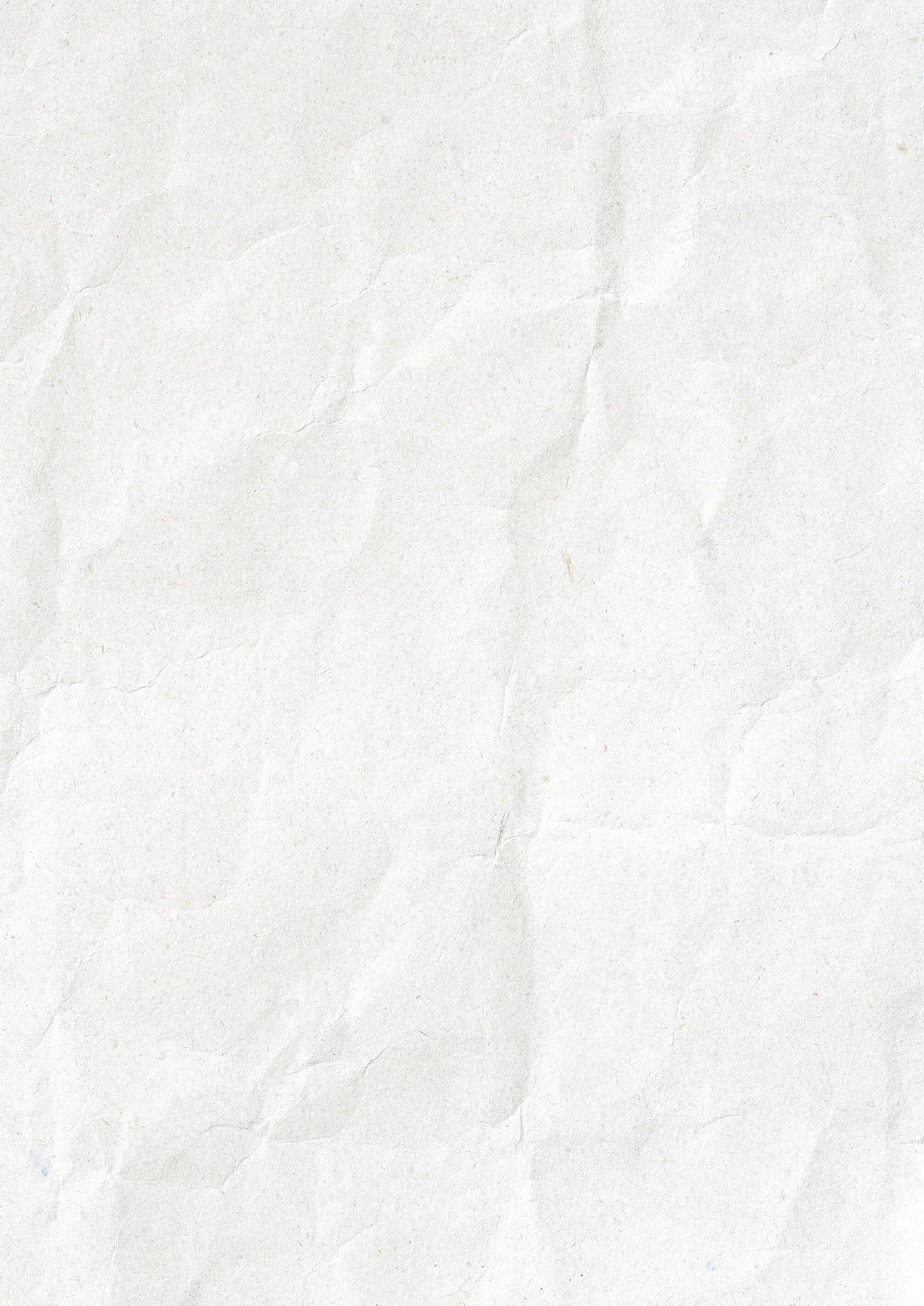
I fall into the wailing lake, Where blue does then my pallid make To make you wonder in your cup
“Dear God, what have I given up?”
Beneath the blinding mirror sky, I’m not forlorn, though I should die. With corpses of companion-kind, I’ll join the ghosts of victims blind.
I envy the sweetened summer breeze, That makes its way beyond the trees To a world of wintry times. It takes perfumes of whispered breath And cruelly giggles; It knows the depth Of longing hearts that can’t be climbed. If, your voice, as petals do hear it, Was warmth to reach, though merely in spirit. I – caught in your blue sweater fuzz, I’d catch the drop of rain that falls From cerulean beads that, in morning, call Longingly as the spirit of summer does.
 Sienna Sulicich
Sienna Sulicich
It was the perfect storm. I’d just gotten out of a long-term relationship with my high school boyfriend (heartbreaking, truly), and I was packing my life up to move interstate. Somewhat friendless, clinically depressed, and overworked, I fell into the comforting arms of Korean pop and hip hop. It was only a matter of time before I started scouring the internet for some like-minded (mentally unwell and obsessive) individuals. The home of these people? Twitter.
Twitter is the perfect place to spew your guts when you’re freshly eighteen and living in a manic haze. And spew my guts I did - nothing was off limits. I was thirsting over this K-pop idols, revealing my inner workings and spiralling publically on the timeline. Group chats ruled my life, and I ruled those damn group chats. Properly explaining my obsession is impossible. All I can say is that I have discovered a total of six different Twitter accounts I created at the time - a counter to deal with direct message caps. Twitter actually believed I was a scam due to the amount of messages sent in a day. Embarrassing, and somewhat impressive.
It wasn’t all sunshine and rainbows. I ended up spending the majority of my day online. When I was delivering cheap pizza in the middle of the night, I would be pulling over every five minutes to check my Twitter messages. It became obsessive. It ruled my life. I let it rule my life. In one of the worst mental states of my short lifetime, Twitter appeared as my only salvation.
I can’t complain too much. Twitter was kind to me, all things considered. I met some of the sweetest people imaginable, some of whom I am still friends with today. I was less alone, even for a short minute.
I got off Twitter about eight months after I started. I still loved K-pop, but I realised I had to stop hiding online. It was only making my health worse.
I kept the account all these years as a testament of my survival, but also of the downfall of humanity. And so, without further ado, please enjoy some exemplary Tweets.
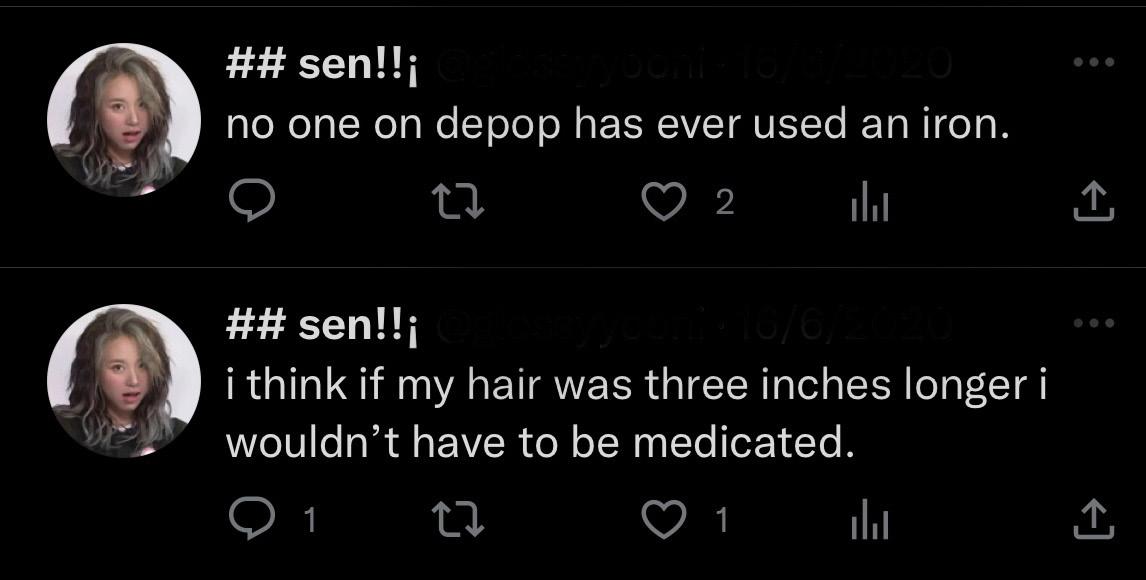


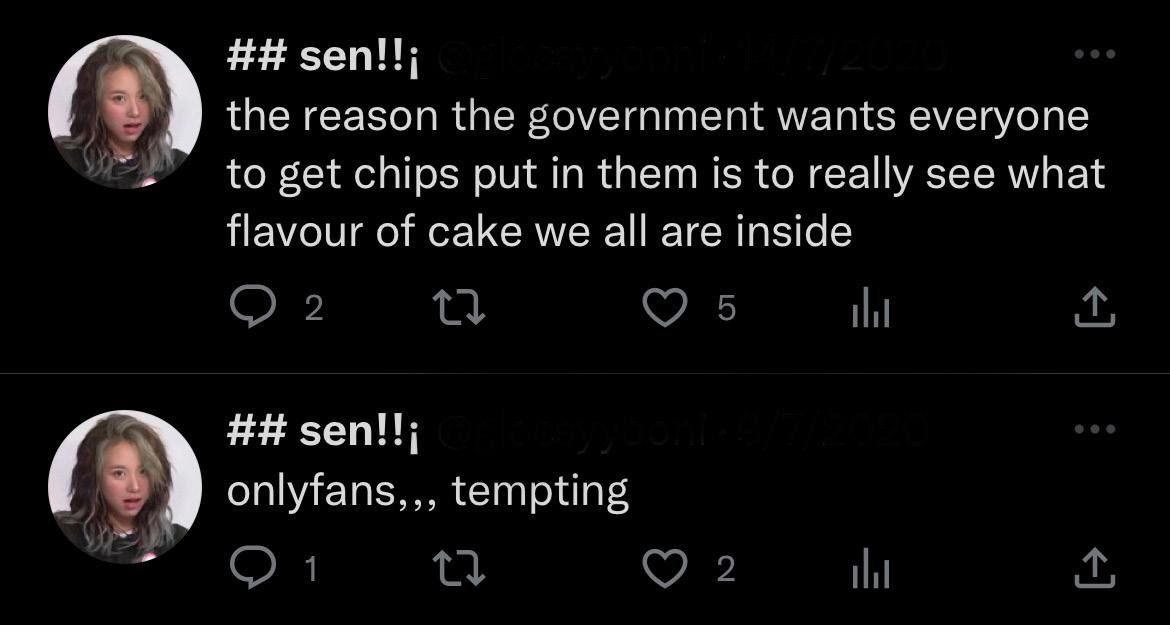





Karl Marx and Friedrich Engels’ Communist Manifesto is among the most read books in human history. Ever since its publication in 1848, pro-capitalist commentators have attempted to bury the ideas embodied in the Manifesto. Yet each generation of activists, from working-class militants to student radicals, has returned to Marx and Engels. Today, the Communist Manifesto remains a forceful incitement of capitalism and an argument for revolution.

When the Manifesto was first written, capitalism dominated only small pockets of Western Europe and North America. As Marx predicted, the need for a constantly expanding market chased the capitalists, the bourgeoisie, across the globe. Capitalism had to “nestle itself everywhere, settle everywhere and establish connections everywhere”. Today, capitalism dominates across the world with waged workers being the dominant class on the planet. Marx and Engels’ statement that society is increasingly divided into “two great hostile camps, into two great classes directly facing each other - capitalists and workers” is more true than ever.
Capitalism has undergone significant changes since the time of Marx and Engels, with inequality reaching new and dangerous highs. The wealth inequality in countries such as the United States has reached levels comparable to those of the pre-French Revolution era, where the poorest 40% of individuals have a standard of living that is
worse off than 18th century peasants. With the economic downturn and the rampant cost-of-living crisis, household wealth will likely maintain its unequal trajectory worldwide. The richest 1% continue to hoard more than 60% of all wealth, while telling the rest to be content with the scraps. The downward pressure on living standards is helping sustain an all-time high of corporate profit. How is this possible?
The polarisation between workers and capitalists means that such grotesque inequality is built into capitalism’s DNA. The accumulation of wealth for some, Marx wrote, is at the same time accumulation of misery for the majority. Crucially, the rich are rich because the poor are poor and remain so. Marx had a simple term to explain this: exploitation. He argued that in a system where the means of production is controlled by a minority, the capitalists’ profits come from paying us only a fraction of the value we produce at work. As capitalists are locked into competition with each other, they always seek ways to cut costs and maximise profits, which often results in less pay to the workers.
Ironically, after the capitalists emerged as the key architects of growth during Marx’s day, they themselves became an obstacle to greater human development. Capitalism’s insatiable drive to generate profits pushes the system towards crisis. The capitalists created wonders far surpassing the Egyptian pyramids, write Marx and Engels, but capitalist society, having
“conjured up such gigantic means of production and of exchange, is like the sorcerer who is no longer able to control the powers of the nether world whom he has called up by his spells”. Business competition, hailed as the driver of innovation, becomes a hindrance. Today, we see this in repeated economic crises, such as the 2008 crash due a housing market bubble and the dumping of crude oil barrels in 2020 when prices dipped below zero.
Competition causes another type of crisis of the system noted in the Manifesto – the crisis of overproduction. “In all earlier epochs,” Marx and Engels explain, these crises “would have seemed an absurdity”. Today, however, overproduction creates a world in which poverty and unemployment coexist with immense wealth. Tons of freshly-made produce like avocados are dumped and left to rot while swaths of people around the world are left to starve. In Australia, houses sit empty as hundreds of thousands of families struggle to put a roof over their head.
Marx and Engels understood that the drive to accumulate wealth required a steady supply of human
labour. As the Communist Manifesto puts it, capitalism assembles “masses of labourers, crowded into the factory, who are organised like soldiers”. Where feudalism meant that workers were disparate and alone, “the advance of industry … replaces the isolation of the labourers, due to competition to maintain that efficiency of the capitalist machine”. Above all else, capitalism produces its own “grave-diggers”.
Marx and Engels described the working class as a “revolutionary class”. Workers create all wealth but, unlike the property-owning minority, their interests lie not in the accumulation of private wealth, but in the collective ownership in a society that does away with exploitation. The Manifesto was penned in a time when Europe was shaken by a wave of struggles and revolutions,
in which Marx and Engels were active participants. Despite their claim that the fall of capitalism and the victory of the working class are “equally inevitable”, Marx and Engels understood that capitalism, despite its crises, wouldn’t collapse on its own accord. Radical change must be demanded, fought for and organised from below. The Manifesto served as a political tool for an active and fighting organisation of worker communists, arming them with theory and strategies.
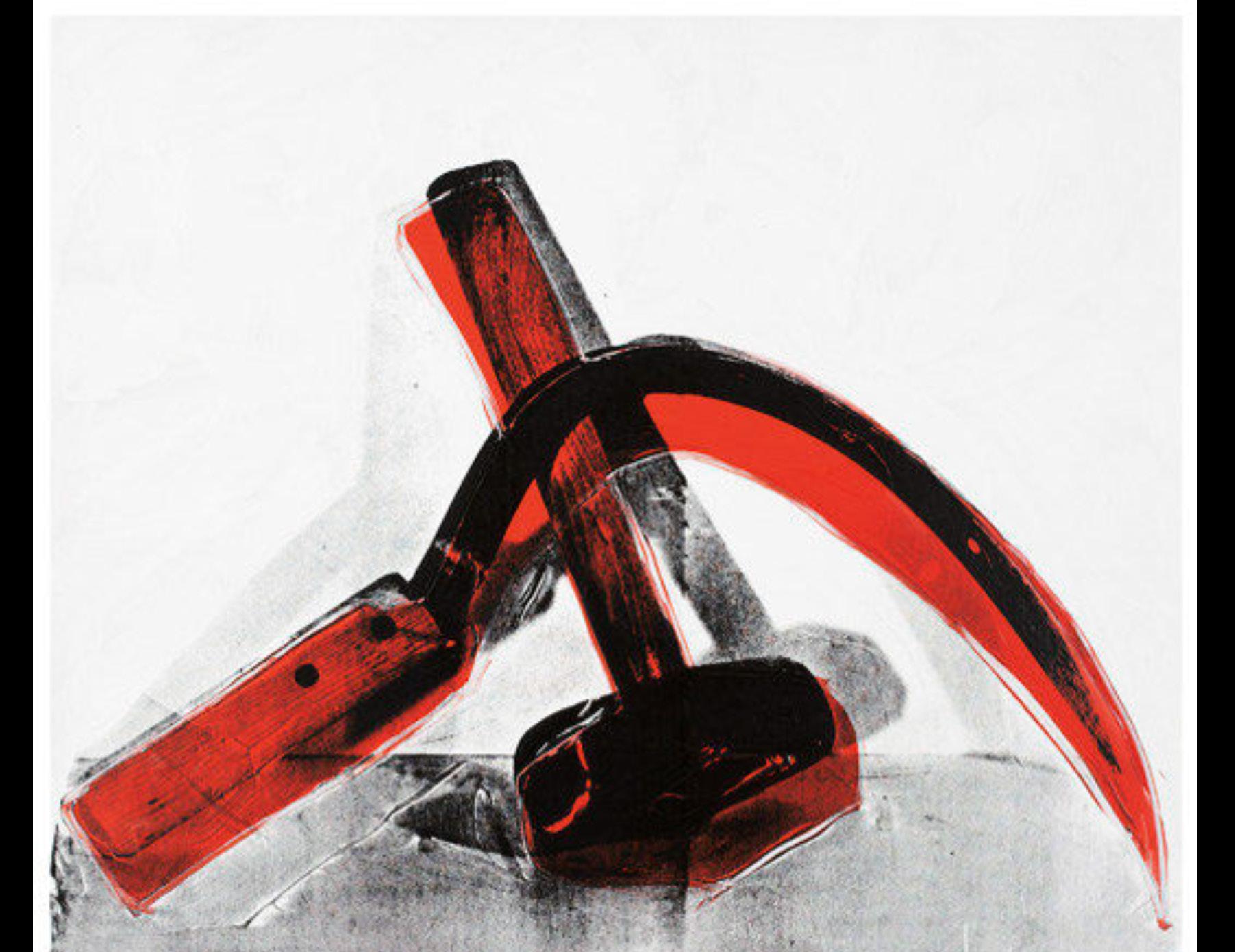
175 years after its completion, the Communist Manifesto remains as relevant as ever. Compared to Marx’s time, the crises of capitalism today are deeper, and the working class larger and better organised. The Manifesto does not merely ask us to sit back and passively analyse the world, but ends with a call to arms:
“Let the ruling classes tremble at a communist revolution. The workers have nothing to lose but their chains. They have a world to win. Workers of all countries, unite!”
I’ve never been much of a sports fan.
I think my brother’s weekend soccer games put me off it. His horrifically smelling clothes, thrown around the laundry. The shouting and the crying and the air punching. A terrifying tonic of testosterone, served in a Simpson’s cartoon beer glass for your consumption!
So, when Superbowl comes around, I’ll happily admit to being one of those people posting Instagram stories with the caption “why are they playing football in the middle of a Rhianna concert???”. Nonetheless, despite this lame dislike I can’t quite shake off, I can appreciate its influence on pop culture and the viral phenomenon that it’s become. The game, the half-time show, the food, drinks, and the advertisements.
A few weeks have passed since the whole charade, and, surprisingly, the one thing that stuck wasn’t Rhianna’s baby bump or her marshmallow men. Instead, it was an advertisement for a free-to-use streaming service that had an onscreen time of 15 seconds – Tubi. Not because it was a particularly great, life-changing ad (it wasn’t bad, I suppose), but because it opened a long-awaited discussion on aggressive sports culture and its impact on domestic violence within the home.
For those unaware, Tubi tricked the Superbowl’s attentive viewers into making it seem as if someone in the room had taken control of the remote, and was switching channels from the Fox’s Superbowl commentators to the Tubi app. And, naturally, with phones out during the event, some of these rather passionate reactions to the ‘prank’ were recorded.
Most were funny, but others were quite scary. In some cases, aggressive, alcohol-driven men took to shouting, swearing, punching walls, and pushing people off couches in case they were ‘sitting on the remote!’. Many women reported breaking up with their boyfriends shortly after the event, with the ad revealing a few red flags that they appreciated seeing earlier rather than later.
And the fact of the matter is that there is a known correlation between sports events and an increase of domestic violence in homes, no matter how small or big the sporting event is.
A study out of New South Wales demonstrated a 40% increase in domestic violence against women and children during the State of Origin games. In Canada, a study reported an increase of 15% in calls to domestic violence hotlines in the province of Alberta when local football teams played. Parts of England register a 38% rise in domestic violence reports made to police when local teams lost a game, and a 26% rise when they won.

And we’re not even discussing the United States, or the many other countries where being a woman is far more dangerous. We’re not even discussing the 80% of women who do not report, do not contact police, and do not realise that they should in the first place.
But why? Melanie Pescud, a researcher at the Foundation for Alcohol Research and Education, suggests that the reason for this sudden aggression is a result of “a volatile mix of alcohol […], gambling, toxic masculinity, heightened emotions, tribalism and competition”.
Pescud, as have many others, noticed that it isn’t an issue of sports being inherently bad, but rather its culture.
A culture has been created around sports that encourages aggression and defensiveness, all in the name of “thriving competitiveness”. And its two main aggressors are the alcohol and gambling organizations that promote this behaviour in hopes of a rise in sales, uncaring of the parallel rise in violence against women.

This is no recent development either, but rather one that has been building since people first realized the adrenaline boost you can get when facing an opponent. And, because of this deep history – quite literally a culture embedded in our veins – there is no easy fix to this glaring problem.
I guess I can repeat mantras you may have heard before. Don’t support alcohol and gambling organizations. Support organizations that assist survivors of domestic violence instead. Reach out. Spread awareness so people know to reach out.
Respect the people around you, it’s just a game. Thanks, Tubi, for reminding us of that.
White Ribbon, 24-hour domestic violence help line: 1800 737 732
References
Pescud, M, 2018, Whether teams win or lose, sporting events lead to spikes in violence against women and children. From: [https://theconversation.com/whether-teams-win-or-losesporting-events-lead-to-spikes-in-violence-against-womenand-children-99686]
Saferresource, n.d., Recognising The Evidence. From: [https:// www.saferresource.org.au/the_evidence#:~:text=95%20percent%20of%20men%20and,have%20never%20contacted%20 the%20police.]
Truong, K, 2018, What You Need To Know About Domestic Violence & Big Sporting Events. From: [https://www.refinery29.com/en-us/domestic-violence-sports-events-study]



and who’s surprised!
YouX had until the 22nd of February to appeal a recent external review lodged with the State Ombudsman over a Freedom of Information request into last year’s controversial Adelaide University Union (AUU) to YouX rebrand.
They declined to release documentation due to legal advice suggesting they are not defined as an agency under Section 1(4) of the FOI Act. An agency is defined as ‘…(f) an incorporated or unincorporated body –(i) established or continued in existence for a public purpose by an Act…’. The dispute arises as to whether YouX serves a public or private purpose.
Supporters of the FOI request cite the organisation’s establishment in legislation (the AUU is established in the Act which establishes the University), and that it provides a service to the public (any member of the University of Adelaide can access its services).
The State Ombudsman ruled that it is an agency under the FOI Act – the decision now subject to appeal by YouX.

At this stage, there has been no announcement on whether an appeal has been lodged.
In comments provided to us prior to the 22nd, YouX President, Luke Allen, stated that ‘the Board is still receiving and considering advice’ and ‘will take the time required to advise the Ombudsman of its decision’.
If found to be subject to the FOI Act, YouX will be required to release in-camera Board minutes (minutes from the private section of Board meetings, which media and the public are excluded from).
Edward Satchell, the student and now alumni, who lodged the FOI requests, raised concerns with the Ombudsman that not all YouX documents pertaining to the FOI have been provided for consideration. The Ombudsman requested that Satchell resolve this with YouX directly. No reply has yet been received to his January 25th email.
He hopes the documents released will reveal the costing of the rebrand.
Satchell also lodged a Freedom of Information request with the University of Adelaide last year, similarly requesting documents containing information on the rebrand. The University agreed to the release of some of its documents, while others were partially released and some barred.
The University provided the reasoning that documents identified as ‘affecting business’ (Clause 7) or ‘containing confidential material’ (Clause 13), as defined by the FOI Act, should not be released in full, or at all.
Satchell lodged an appeal with the State Ombudsman, who concluded all documents should be released (with the removal of personal phone numbers). The documents were not found to fall under the protections of the FOI Act.
The University did not appeal this ruling and the documents were released last year. These documents include emails from University and YouX staff members, and the briefing presentations on the rebrand project.
The Adelaide University Union rebrand project overview showcases a survey of 904 University of Adelaide students, 52% of whom were AUU members. This survey researched students’ awareness of AUU services, feelings toward the word ‘union’, AUU relevance, and the needs and attitudes of students.
It showed that, while many students were unaware of the services provided to them by the AUU, 73% of non-members had still used an AUU service.
The AUU’s relevance to students was seen to increase when first prompted with the AUU’s mission and goals.

Most important to the rebrand were questions around the word ‘union’.

When asked whether the word was more positive or negative to the identity of the AUU, ‘93% of students feel that the term is positive or neutral’.
Students associated the term with the themes of ‘a group, united for a common purpose’ and ‘representation’. Only 19 students had negative feelings toward the word and only 12 related it to politics.
Allen commented that the rebrand aims ‘to create a brand that better communicates the work that [YouX] does’. He referenced a focus group ‘undertaken after the survey’ which concluded that many students found the word ‘union’ ‘confusing in terms of how well it explains the services’ provided by the AUU/YouX.
In a provided comment, Satchell stated his belief that the rebrand ‘has not increased student understanding of the services of the Adelaide University Union/YouX’.
Also released were various emails between Marketing and Communications Manager, Kearin Hausler, and the University’s Chief Marketing Officer, Dr. Benjamin Grindlay. The emails detail Grindlay’s concerns that the proposed alternatives to AUU required unnecessary explanation to be understood –undesirable for a service which needed to be easily understood and accessible. In an email to Kearin Hausler, the Marketing and Communications Manager, Grindlay formally notes seven key concerns regarding the rebrand:
Loss of brand equity and history, disconnect between the AUU and University of Adelaide, need for brand explanation and establishment, project timing amid cuts, loss of identity as a student run organisation, name discourse overshadowing its position, and risk reward ratio. It must be noted that Grindlay is a staff member of the University and not of YouX (then AUU), and was consulted during the rebranding given the University’s status as a key stakeholder. Because of this, Grindlay was not involved in the development or rollout of the YouX brand, nor could he speculate on whether his concerns had been justified or if/why they had been ignored by the board, when reached out to for comment.
Satchell, however, pointed to online criticism from students, as well as from domestic and international media, as evidence that Grindlay’s concerns had been justified.
Allen insists that Grindlay’s opinion is ‘highly regarded’ and that his concerns were referred to in subsequent stages of rebranding.
Even Grindlay, despite his reservations, accepts the ‘baggage’ relating to the term ‘union’.
Some view it differently; such as Billy Zimmermann, a student and an AUU Board Director at the time of the rebrand proposal. In an email to Grindlay, Zimmermann accuses the Board – at the time controlled by a right-wing coalition – as pursuing a rebranding purely out of ideological opposition to student unionism and to the term ‘union’ itself.
In October 2020, the AUU Board voted to remove three directors. Ella Shaw and Ashley Jayasuriya were removed due to their refusal to sign a statement confirming they had not leaked, or discussed in-camera items with On Dit or other media (2020 On Dit editors claimed not to have had such contact). Arabella Wauchope was removed over a private Instagram post criticising the then-SRC president, Oscar Ong, which was alleged to constitute misconduct.
To be clear, none of them were removed because of their opposition to the rebranding. In his email, Zimmermann highlights the removal of dissenting voices, even for unrelated reasons, as further evidence that the rebranding was driven by a few individuals rather than being a unanimous process. Zimmermann declined to comment further.
At this early stage, it’s unclear. The decision certainly faced a lot of blowback last year.
Satchell called the rebrand an ‘abject failure’ as it was ‘widely criticised online from both students and the international media’. Many have pointed out its similarity to porn website names.

Allen stated that YouX ‘have continued to see high engagement levels across [their] on-campus and online activities’ and brand performance will be measured over the ‘longterm’.
It remains to be seen whether students will ever receive a true explanation for the rebrand, or learn exactly what it cost.
slay.exe not found.
slay.exe not found. found.

Something no longer tangible throws my body into peril. I revise of every tingle of self-hatred from before. My legs collapse under the weight of my stomach, and the stones that reside there.
When I remember the four worst moments of my life, I’m there again.
Strangers shoving my sides, invading my space.
Memories crowd the only place sacred to me. Creativity suffers at the cost of reliving.
I am no longer afflicted with the insanity of mixed drugs and drinks, toothless grimaces, vomit-stained sweaters, and aching collarbones. My underwear are not tainted by my refusal to be selfish when I needed to.
This is the only glimpse I offer, reliving these memories is overpowering. I gasp in the vapours of putrid thought, overrun with infestations of past anxieties that never died.
Memories confuse me.

Winter intrudes Summer with the feuille-morte as her bitter warning. Her icy hand pricks the soft skin, cutting warm weather short. Regardless of her resolve, the heartland
is swept under layers of wet decay. The leaves that once danced in the light now fall forgetting the wounds under where they lay. There, twisted life forms. They will start to crawl.
Winter recognises this, her creation of ill intent, will be smothered by her. Summer will resume her old flirtation and Winter will resent her growing purr.
My love is the banished Summer of old. Now I am the Winter who dulled her gold.
My name is Bryce and I have Post Traumatic Stress Disorder (PTSD). I developed PTSD in 2019, within a fortnight of my birthday. I was raped by my girlfriend.
Bryce isn’t my real name. I’m too scared pussy hurt embarrassed
Bryce isn’t my real name: it’s a name that’s helping me to write. Truth is, I’ve wanted to write this letter ever since the rape happened, but I’d always get stuck right around here.
How much more do you, the reader, need to know?
Do you need to know about the relationship beforehand? It was abusive. For that entire year of my life I was gaslit, berated, and coerced.
“I manipulated you.”
Does that sound like a momentary mistake with lasting impact?
“I got what I wanted.”
Or does it sound like something more calculated, another avenue of control implemented to keep me submissive?
“Yes S.”
‘S’ Is as close as I’m going to get to naming her in this. She knows who she is.
“You’re right S.”
She knows what she did.
“I am messy/disorganised/stupid/incapable of drinking water correctly S.”
Now, should she read this, she’ll know what impact her actions have had on me. I hope she does read this, especially this next part: You are a rapist and I do not forgive you now, nor will I ever forgive you for the hell you put me through.
When the rape happened and for weeks after, I was in a state of utter disbelief. I’m a man after all. We don’t get raped. Aren’t we the rapists? The only people that mention male rape victims are pathetic edgelords looking for a gotcha to use against feminists online.
I shouldn’t exist right now, and yet, I do.
Despite all evidence to the contrary, I have become merely a figment of the alt right’s rhetoric. I felt - I still feel - alone.
I suspect this feeling will never go away.
Rape is a nuclear bomb: nothing is safe from it. It doesn’t matter if something was caught in the blast or not, it still gets infected by the fallout. I’m pleased to report that years of therapy have alleviated the worst of my symptoms, but I regret to inform you that I will never be truly better.
Suicide has I used Triggers happen regardless of where I am, what I’m doing, who I’m with, or what precautions I take. They can be debilitating. Anywhere from a mood swing making me suddenly grumpy, all the way to a complete shutdown, where I’m bed bound for a week. These triggers can range themselves from obviously upsetting - like seeing her in person, to completely benign - like a silver car.
There is nothing more embarrassing than admitting that I couldn’t get out of bed for a week because a stranger had the wrong kind of haircut.
Needless to say, it is exhausting being constantly on edge for anything that may potentially upset me, and it has other ramifications on my life. For instance, paying attention to things other than my triggers or seeing projects through to completion are incredibly difficult for me. Maintaining friendships feels nigh impossible, and the idea of being in a successful romantic relationship is beginning to look less likely than finding El Dorado.
After years of spinning my wheels, I decided to take 2022 off from university. I went to work overseas, where I was far away from anything that could conceivably trigger me. I still had episodes, but it allowed me the time to process and move forward. Entering 2023 with a drained savings account, I have a renewed sense of optimism about finally finishing my degree. After all, everything I’ve done to heal has been in service of this end. I hope it works this time.
I’ve finally finished it. Somewhere around 30 discarded drafts have filtered through my thoughts since 2019. I want to leave you, dear reader, with this: If you remember nothing else of my story then remember these words from someone who has stared down the literal barrel of death and still came back.
You are not alone.
You were never alone.
You will never be alone.
Reach out, speak up, and keep fighting - I sure as hell plan to.
Lifeline - 13 11 14
It’s too awkward to walk into the servo for a box of condoms. Reminding yourself to pop a birth control pill everyday can be tedious. Committing to a vasectomy may hurt your pockets and your nuts. But what if I told you there’s another form of birth control that would save you all these hassles? Simply read a list and you’ll be sure to think twice about boinking on your next date. Enter, The Girl with The List.
In 2020, TikTok user yuniquethoughts posted a screen recording of a pros and cons list on her Notes app regarding pregnancy, childbirth, and childrearing. This is no random list made purely out of a blind hatred towards children, though. According to Yuni’s website, her points are crowdsourced from videos or tweets shared by parents and pregnant women themselves – some even tagging her in their videos about their experiences dealing with bodily changes during and after pregnancy, their kids embarrassing them in public, etc. Other sources include her personal research after witnessing one of her family members struggle with pregnancy.



With humorous language and jarring information on pregnancy/childbirth you’ve probably never heard of like the pins and needles you feel when breastfeeding or your clitoris tearing when you’re giving birth, Yuni’s list quickly gained the attention of fellow TikTok users. A new phrase has even been coined to call on her when needed –“Where’s the girl with the list?”.
Mass popularity on videos such as this shouldn’t come as a surprise. When something is controversial or an information is too shocking to gloss over (in this list’s case, both) people will talk about it. Also, following the overturn of Roe v Wade, we’ve witnessed a heightened interest in the debate over women’s bodies and experiences. So, unsurprisingly lots of comments and stitches criticising and praising the list began to flood the internet.
Which begs the question, was the list ever a good idea or is it just another fearmongering tactic to scare women off motherhood and a breeding ground for anti-children advocates?
It may be misinformative – if you missed the asterisk, that is. Going down the list may make you feel like you’ll be hitting a nail in your own coffin by the time you give birth. Everything seems to point to the worst-case scenario and that’s the problem with the list, it runs the risk of sensationalising pregnancy complications and neglecting to provide context as written on an NBC News article. For example, that whole thing about losing your teeth during pregnancy. To write “gain a child, lose a tooth” suggests that
pregnancy is the cause of tooth loss when that is not entirely true. According to Dr. Dmitry Malayev, pregnancy may just exacerbate an underlying oral issue which causes you to lose your teeth. Misinformation like this could lead to generalised fear and if women are feared out of having children, was it ever a choice to not have one?
In 2020, Australia’s fertility rates hit a record low. According to The Guardian, 1 in 3 Australian women are opting out of motherhood due to climate change or overpopulation while others simply just don’t want to. You might be set on a child-free life and that’s totally okay but for those who are on the fence about it, this list might scare them out of having one. Another TikTok user was concerned that this list might be harmful towards women who are already so insecure about life after pregnancy. I quite agree, upon reading the list at first glance, it does seem to paint a rather horrifying picture of parenthood, especially how it suggests that you won’t have a life anymore or that your kids will resent you forever – causing me to think further about my future choices. “It’s a bit of an exaggeration”, says Amirah, a young working mom of one who expresses that she’s still able to do the things she liked to do and maintained the friendships she had before becoming a mother.
Generally, the list has been positively received by netizens. It has been praised for revealing the realities of pregnancy and parenthood which has too often been romanticised. I grew up with that same glamorised image until my sisters started giving birth – that was when I knew that mothers don’t just come out of that labour room unscathed. Since then, and thanks to the list, I’ve learnt a lot about what my body might go through during this whole process. To put it mildly, you will be leaving with some scratches here and there. It’s a wonder why information like these aren’t talked about enough (poor health-ed might be why) but I’m glad that I now have an idea of what I might be up against. Another commenter has also expressed the comfort they received from the list as it prepares them for motherhood.
TikTok creator and mother, Sarah Biggers-Stewart, told NBC News that she believes women are less likely to talk about their complications when they feel like they’re the only ones going through it. The list, it seems, has provided women with a safe space to voice out their concerns and issues, and ask questions, regarding pregnancy and motherhood. To learn that what you’re going through is universal can be a point of comfort and to learn the opposite, may give you a heads up to talk about it with a medical professional – encouraging early prevention. So, it’s a relief to be given a platform for women to speak truthfully about their experiences and to discuss what they’re going through.


You can lump yourself anywhere when it comes to matters such as this. Personally, I find the list to be an eye-opening piece of information. I do believe that parenthood is a fulfilling journey and a damn selfless act to commit to, but it is also not for everyone. That doesn’t warrant a concealment of the dark side of parenthood, nor the condemnation of those who choose to speak their truth. Women should be free to share their experiences, even the ugly ones.


You might expect a show called ‘The Last of Us’, set in a post-apocalyptic world of cannibalistic monsters, to feature blood, gore, and action. I certainly did and if that’s what you’re after, the first two episodes do not disappoint. I naturally expected another episode centred on the mission at hand: escorting Ellie (Bella Ramsey), a stubborn and sassy teenager who appears immune to the cannibal disease, across the United States. I was therefore dumbfounded by episode three: a bold deviation from the central plot and true emotional rollercoaster. A masterpiece of storytelling,
Bookended by the central plot, in the year 2023, Joel (Pedro Pascal) and Ellie head for Bill and Frank’s house at the beginning of the episode. We are then cast back to 2003, where the tale of Bill
Equipped with his basement full of food, weapons, and other resources, Bill (Nick Offerman) avoids being carted away with the rest of his village to ‘quarantine zones’. He intelligently interprets they are being taken to their deaths, as ‘dead people can’t be infected’. A short while later, his one-man village becomes a haven from the abominable outside world, fully protected by sophisticated traps of his own making. His tough exterior and determination to live in isolation will soon be broken down. Four years later, Frank (Murray Bartlett) finds himself in one of Bill’s traps and manages to talk himself into a meal before heading to Boston. However, the vastly different pair quickly build a strong connection, and their meal turns into years spent together.
Director, Peter Hoar, does a brilliant job of creating an existential sense of dread throughout Bill and Frank’s entire story. Scenes of them simply enjoying life together are incredibly wholesomeenough to start the waterworks - yet overshadowed by the reality of the world they live in; things can’t end happily ever after. This dread is brought to a new level when the village is threatened by raiders and Bill is shot. I thought this was the inevitable tragic end, but alas, Bill is saved by Frank. The connection, love, and dependency between the pair only increase. As does our attachment to them as an audience. We can only brace ourselves further for the painful end of their story.
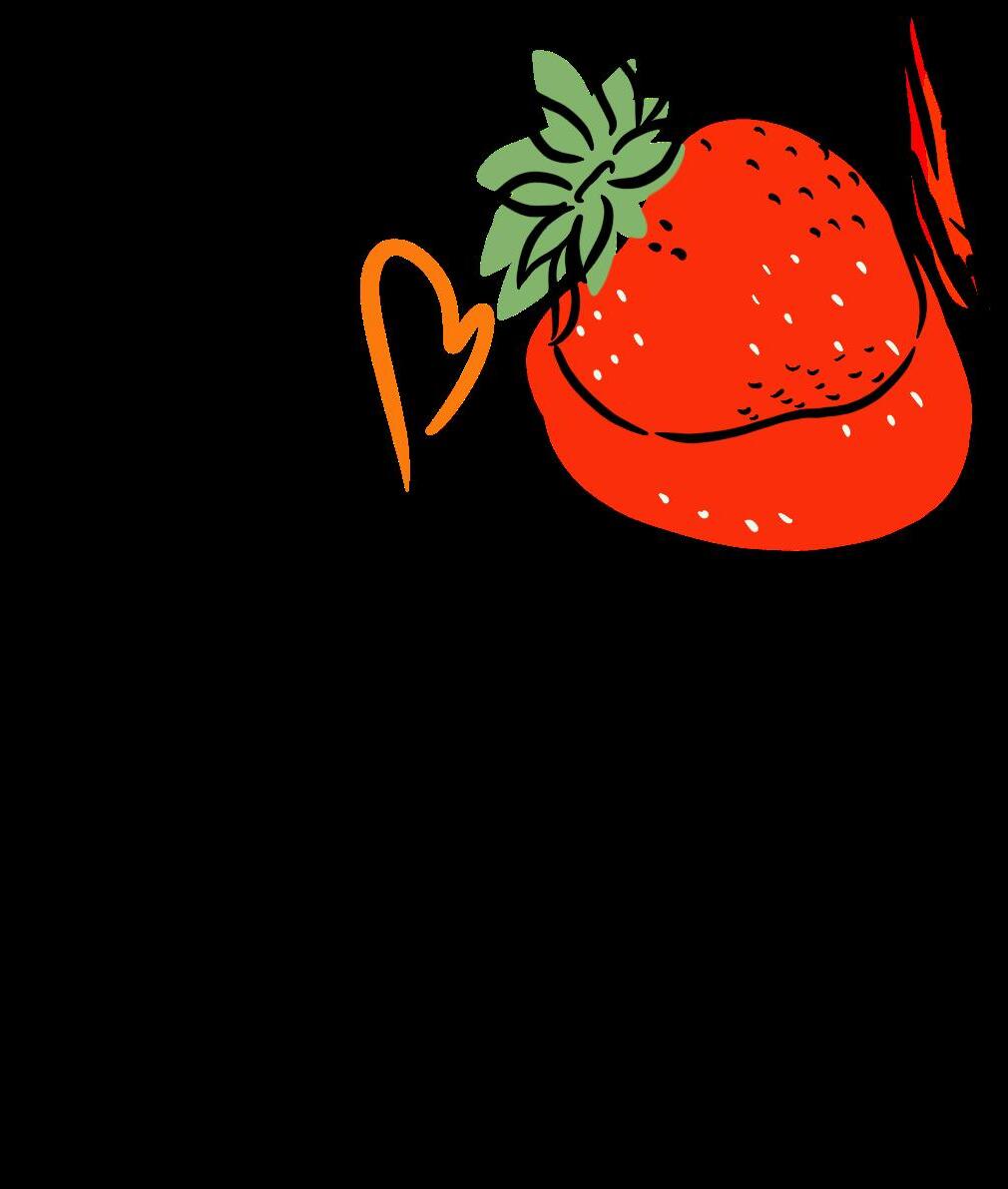
We are cast forward again, closer to the present day in 2023. The couple looks much older and Frank sits immobile in a wheelchair. This is a slight twist I did not see coming. I was expecting a dramatic ending, where one of them is killed or infected by the cannibals that plague their world. This is a show about surviving in a zombie apocalypse after all. But Hoar con tinues to focus on their beautiful romance. That’s what makes it devastating.
‘It’s my last day’. Almost a direct cue from Frank to grab your tissues. Despite Bill’s desperate objections, Frank asks him for one last ‘good day’ together, where they go to the boutique, get married, and have a delicious dinner. Frank will then drink some wine, before ‘falling asleep’ forever in Bill’s arms. That conversation is difficult enough to witness, but now we must watch it all happen. We must brace ourselves for one of the most devastating television montages we may ever see.
The camerawork, shots of Bill pushing Frank’s wheelchair, their marriage, the music; everything about this scene is so beautiful and so heartbreaking. No words are spoken or required. Until Bill reveals that his wine was also deadly, as he would no longer have a purpose without Frank. Through tears, Frank summarises Bill’s decision perfectly for us: “From an objective point of view, it’s incredibly romantic’. As an audience, we just have to love them. The pair head off together to bed, and that’s the last we see of them. There is no confronting sight when Joel and Ellie arrive at the house, just a letter left by Bill. A shot of the open window to their bedroom is how this episode ends - something so delicate and the most appropriate conclusion.
a different side of the apocalypse and helps us understand how dark and tragic their world is. It explores the nature of humanity and the choice between living in isolation or with the constant fear associated with loving someone - the fear that you will lose them. As Bill tells Frank: ‘I was never afraid before you showed up’. That line alone is enough to break your heart.
So, what comes next? How does one follow an episode full of such romance, high stakes, hope, and despair? If the ensuing episodes are anything near the quality of episode three, we are most certainly in for a treat.
(a spoiler-filled review)
Missed Chapter 1? Don't fret! Pick up On Dit Issue 91.1 or catch it online at issuu.com/adelaideuniversityunion.



“Welcome to the Academy!” Random exclaimed, with a bewitching enthusiasm. Barry’s instinct was to be polite, but in his head, only one question burned:
“What kind of stupid name is Random?”



“Well, you don’t mince words, do you?” Random answered, making Barry jump and realise he’d said that aloud.


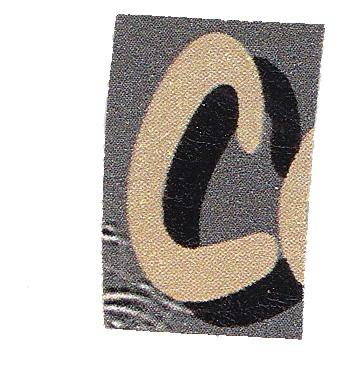

“No. I grind them.” Barry quipped wryly, before realising he’d created an awkward silence. Random cleared the air with a cough.
“Anyway, on with the tour. Follow me!” He marched off to the left, assuming Barry would come after him. Barry sighed but did so, and looked around as they walked.
The long stone hallway had many doors, some of which were opened, allowing Barry to see some old wooden tables and chairs with ornate etchings decorating them. They also passed some windows, allowing Barry to see grounds outside, including a huge grass oval and a forest off in the distance. Students mingled and frolicked, somehow doing so in tight-leather. Barry was not a kink-shamer, but to do it in this heat, and in a school, geez.
H“Form-fitting outfits enable more conducive spellcasting.” Random explained when Barry asked about it.
After some time, they reached the end of the long hallway, and Barry crossed his arms, unimpressed. What a tour that was when it held nothing more than a dead end hallway. Random then waved at the wall and just as Barry was about to think this guy was crazy, a massive oak door flickered into existence and opened itself.
“Where the hell did that door come from!?” Barry shouted, startled and a little bit freaked out.

“Hm? Ah, I forgot; you’re not from around here.”


Random’s outstretched arms encouraged Barry to finally look around them.
“You see, the Academy is the frontier institution for implementing magic into everyday use! Behold!” Random gestured to the stone edging the door frame, and Barry leaned in to look.


There were runic inscriptions embedded in the stone, and now that he noticed it, he could see them everywhere. They ran across the floor, along pillars, stretching even into the ceiling. Fragments of the script came alight as magical artefacts were used by passing students. Barry observed hovering panels for transit, shifting columns of stone, golems that did menial labour. Some glowing runes were even used as lighting.




“The foundations of the Academy are infused with the flow of magic.” Random continued. “Nearly all installations operate on stored residues or have sentience. Thus we call it auto-magic.”
“Flow? You mean, like… the flow of current?” Barry asked, hoping to at least hear ‘electricity’.
“Why, yes, exactly like a river.”
This was all nonsense. Runes? Magic? Where was the science in all this? Newtonian physics? Why had Edison and Tesla forsaken him so?
“This is a hoax! A lie!” Barry accused. “This has to be science! Magic isn’t real!”
Random frowned. “How could it not be? It’s all around us.”
Barry began crying to the sky for a God that wasn’t there. Random looked on as Barry wailed. It was all very melodramatic, really. No passers-by regarded them, thinking it was the monthly student breakdown in the academy hub.
“You don’t feel it yet, do you, Barry?”
Calmer, but still confused, Barry observed Random pluck out coins from a concealed pocket. He flipped one at Barry who caught it clumsily, and then he felt it: a tingle to the touch, an energy to the air: the coin held magic, whatever it really was, somehow. Barry brushed its surface and felt an embossed pattern. Runes, like those on the walls.
“All currencies are etched and imbued with latent magic. Mostly to prevent duplication and therefore inflation or thievery,” Random flourished four coins in one hand, and suddenly Barry’s eyes caught the light of brilliant fire: each of the coins had been lit aflame, somehow, impossibly. “But they can be used to cast magic!”
Random gave an array of flourishes, trailing flame throughout the air. When he was finished, he gave a flick of the wrist, and the coins were gone. Showing off his empty hands, he bowed, eager for Barry to be a sated audience.
Barry pondered. He’d been teleported, seen their arcane infrastructure, and this dork had summoned fire using money. Maybe, just maybe…
“Fine.” Barry conceded. “Okay. Magic may be real.”
Random beamed. He’d won Barry over, somewhat.
“BUT.” Barry continued. “I’ve definitely seen the coin trick before, and you probably have some kind of self-ignition chemicals on those coins so this doesn’t mean that science is lost! I stand by my convictions!”
Random chuckled. “Well, I have yet to see what this ‘science’ of yours entails-”
“Observe!” Barry cried out, and took a lighter from his pocket, “I, too, can summon fire!”
He flipped the lighter on, and a small flame appeared. Suddenly, the people around them stopped to look, gasping. There was no magic in the lighter, yet it had spawned fire!
Barry, smug and satisfied, began to elaborate: “So, the switch releases stored butane-”

“Dear gods.” Random interrupted. “You have a natural talent for flame! You’re a pyromancer!”
“What.”
“You’ll take your first classes in spellcasting, then.”
Random grabbed Barry by the hand and dragged him away. Barry heard hushes and murmurs of a mage without magic, and the rumour would spread like the fire that incited it. The remainder of the tour had Barry taken to a living library, several student areas hidden by obscuring magic, and a cafeteria.
Well, at least the cafeteria seems normal. Barry thought as they passed.
“Oh, don’t leave leftovers,” Random noted. “Otherwise, the food eats you instead.”
Barry sighed.
“Important notices are found at the Hububble.” Random continued. “Always check your FireMail, and don’t copy down runes you haven’t researched yourself. If you hear moaning in the hall, get your head out of the gutter because it’s just an old ghost we can’t exorcise. Oh, and the campus is locked up at seven.”
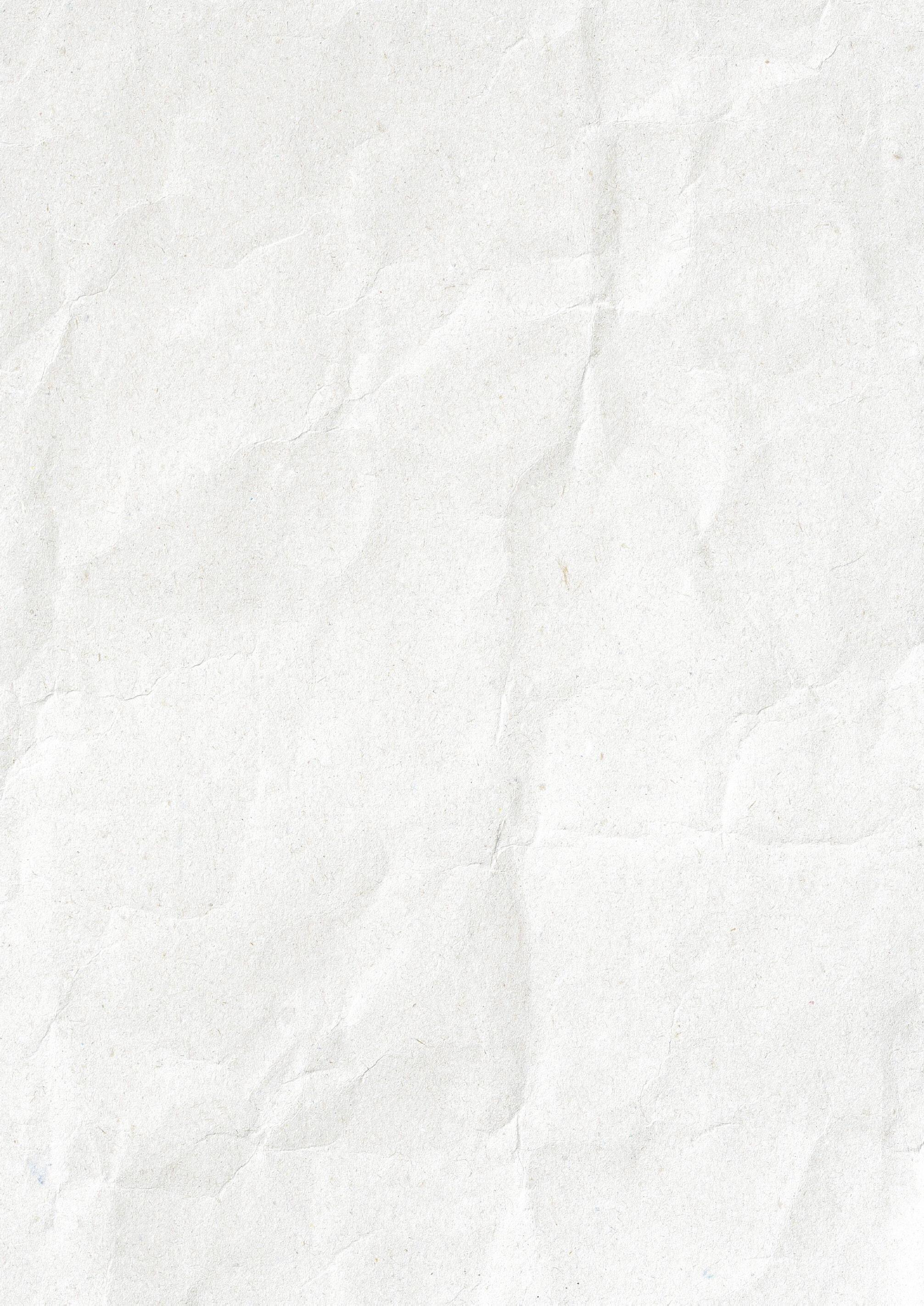
It was all a bit much, but Barry also realised: he was to begin in the morning, and so would need a bed. Hopefully he will wake up from this nightmare.
“And finally, these are the dormitories.” Random said, as if on cue.
They came to a lonely hall with a decrepit door at the other end. Random gave a look that said, ‘Yes, that’s yours’ and Barry sighed. He took the keys from Random, and brushed past.
“Well, I’ll be seeing you!” Random called from behind him.
“Huh?” Barry said, turning, “You mean you’re not coming-”
But there was only empty air where Random stood, as if he was just a passing wind.
Hm. Good riddance. Barry thought, finally alone. He made a happy hum and strode to his room, creaking open the old door, when he noticed a sheet-laden shape atop the bunk bed. Ah, new roomie, Barry guessed, and said:
“Uh, hi? I’m Barry, and I guess we’re roommates.”
Then the bed rustled, the figure uncovered, and Barry was horrified to see a familiar clownish expression, the owner of which replied:
“Well, Random’s my name and random’s my game! Looking forward to spending the entire semester with ya!”
Edited by Emily Miller and Claire Shoubridge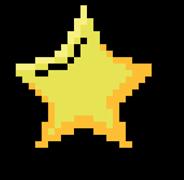


 A Review by Kathers Anderson
A Review by Kathers Anderson
If you’ve ever wanted to experience what life is like in a dystopian world and learn how you would behave (are you a rebel who crosses the line, or are you a drone who follows instructions implicitly?), then Dreamland Isthmus is a must-do experience - brought to you by Dream Drivers, a diverse group of digital enthusiasts from a range of backgrounds in technology. Consisting of a mainly South Australian cast, they are held together by their love of creative technology, and by Hong Kong immersive theatre artist, Onnie Chan.
Be prepared to give up your colour and venture into the bleak, post-war future of commercialised dreams and rigid asinine rules of Dreamland Isthmus. Sounds horrible, doesn’t it? But, instead, you find yourself and your team of strangers enthralled by the challenges of completing puzzles using AR (augmented reality) technology through Instagram, whilst being indoctrinated into the realities of this futuristic world.
The performers joined the waiting audience, who ranged between 10 to 80 years of age (just be warned there is a fair amount of walking involved!), assisting the participants in working the technology needed. Those who do not have an Instagram account are ‘lent’ an account, allowing more people to participate and struggle towards their chances of acquiring their own ‘dream gas’. Be wary, though, as the ‘dream gas’ product is still working out a few kinks.

On the note of kinks, there are a few issues that need to be ironed out with the VR. Images are likely to spin too fast or too slow, or run off your screen completely, and, while I can appreciate their existence, the subtitles in their videos can easily be lost in the background or cut off.
The open-plan of the warehouse venue worked to the benefit of the performance, with white tape on floor and staff members keeping a keen eye out for stragglers who dare cross the lines. The openness also enhanced the sense of competitiveness between the teams, as each team’s success was announced and applauded. The next venue, Arthurs Art Bar, where Dreamland Isthmus will next appear from March 9-13 & 15-19, will be a different experience from the warehouse, with teams being cloistered away in separate rooms. I’m looking forward to seeing how the teams navigate the different settings.
Similar in nature to escape rooms, Dreamland Isthmus is a fantastic team building and ice breaking activity, which would be enjoyable for parties, or solo. If a group that has only been working together for just half a year can make this performance using such innovative techniques, then I cannot wait to see what they will create next.

G’day, my name is Rhiannon. I recently started doing crafts again as a de-stress hobby. This edition’s craft idea was what I started off with when I picked up knitting again and wanted something fun and easy to relearn the basics.
With Easter break around the corner, some of you may be looking to hop into a new hobby or try a fun activity to teach the kids. This is a two-for-one as the rabbit is not only one of the symbols many associate with Easter, but it is also the Year of the Rabbit for Chinese New Year. At first glance, it may seem intricate, but it is, in fact, a beginner-friendly project. An excellent way to practice how to knit a basic square with the bonus of some simple sewing skills. Without further ado, I invite you to follow me down the rabbit hole of yarn-related activities.
Yarn (8 ply preferably)
Knitting Needles (yarn packaging will state which size needles are needed)
A blunt-end darning needle
Poly-fill (optional alternatives: scrap yarn/fabric, upcycle the filling from pillows)
Scissors
Safety Eyes (OPTIONAL)
Cast on 30 stitches (Less or more depending on the size you want the rabbit to be).
Use the basic knit stitch for every stitch (Garter Stitch). Make sure you count every few rows to ensure you still have 30 stitches.
Counting rows as well as stitches can be tedious, thankfully this project is a simple square. Without removing your work from the needles, fold it corner to corner to see if it is square, if not keep knitting until it meets up perfectly.
If your project is now an even square, you can cast off, cut the yarn and proceed to Rabbit Construction.
*Hot Tip* Chunkier, non-fluffy yarn and lighter colours are easier to use for beginners
*Hot Tip* For a tighter knit and less chance of stuffing showing through the stitches, use a knitting needle a size down from the suggested option on the yarn packaging
Thread your darning needle with the same yarn and proceed to sew (as haphazardly as you like – we won’t judge) in a triangle, ensuring to start and finish at the same point. There is no right, or wrong way herejust weave loosely with a bit of spacing, you won’t be able to see it after step 2. If you want a larger head start the triangle base further down.
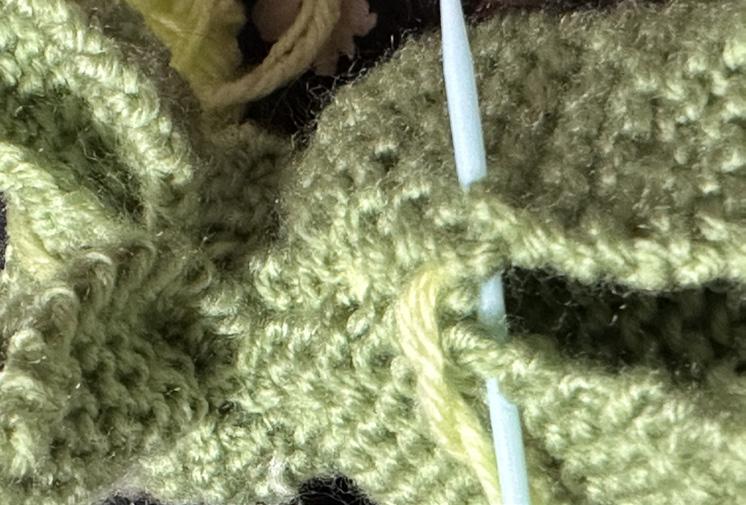

Pull both threads simultaneously in the direction indicated by red arrows. This will pull the rabbit’s ears and head into shape. Here is where you can add the safety eyes if using them as indicated in the photo. Attach the backings to the safety eyes once you are happy with their placement. At this point you can lightly stuff the rabbit’s head to hold its shape before tightening the triangle further. Knot the yarn ends together as close to your work as possible and cut them leaving a small length.
Now you can sew the two sections together indicated in step 3’s photo. Sew, using stitches closer together this time but leaving enough space to push the stuffing in before closing off the bottom. You’re nearly done, told you this was an easy project!


Once stuffed to your liking feel free to finish sewing to close off the body of the rabbit. Knot the yarn to stop your hard work from unravelling and cut the yarn leaving a small length again. From here you can also add some stitches to the back of the head if needed following the same method as step 3 and 4.
To tidy up your yarn ends, re-thread them individually using the darning needle and thread into the body of your project and through to the other side hiding the yarn end inside. If there is excessive yarn pull the thread through with some tension and trim the excess, so it springs back inside.

Ta dah! You are officially a knitting magician, now that you have pulled off this hat trick of a rabbit project. Feel free to test out the alternative finishing options below as you create an army of adorable, knitted rabbits.
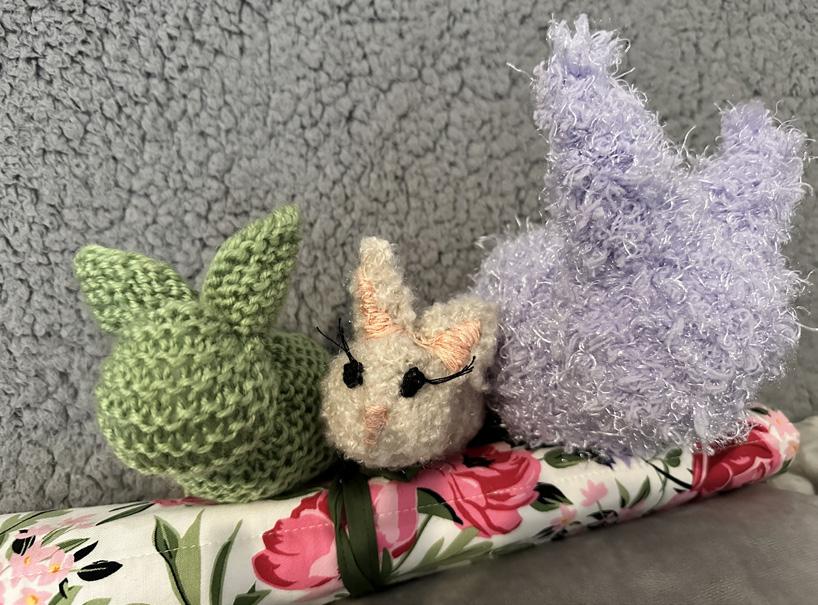
Hot Glue on a pom-pom for a tail or learn a new skill and make a pom-pom using the same yarn.
Sewing up the ears with or without stuffing if that is a look you prefer for your new bunny friend.
If you or a friend / family member are proficient in cross stitch or embroidery another alternative is to embroider the facial features (See my terrifying embroidery attempt below).
Adding a bow or some ribbon for a snazzy addition.
1. World War One
2. 2010
4. 0
5.
6. Platinum
7.
8.
9. Pink
11. T S Eliot
12. Mine! Mine! Mine!
13. 3 (Red, Blue, Green)
14. Justice Crew
15. 1930’s
16. Agriculture
17. Pikachu and Jigglypuff
18. Typo
19. Ngarrindjeri man David Ngunaitponi (Unaipon) and Edith
Cowan
20. Smash
• 24 x free lunches and drinks
• Palace Nova Cinema Package
• Goodies showbag

• Free events
• Discounts program
• Exclusive competitions and giveaways
$300 OVER VALUE youx.org.au/join
3 Year $55

